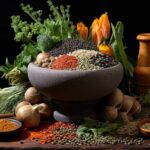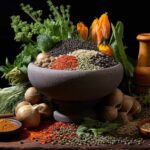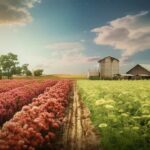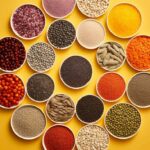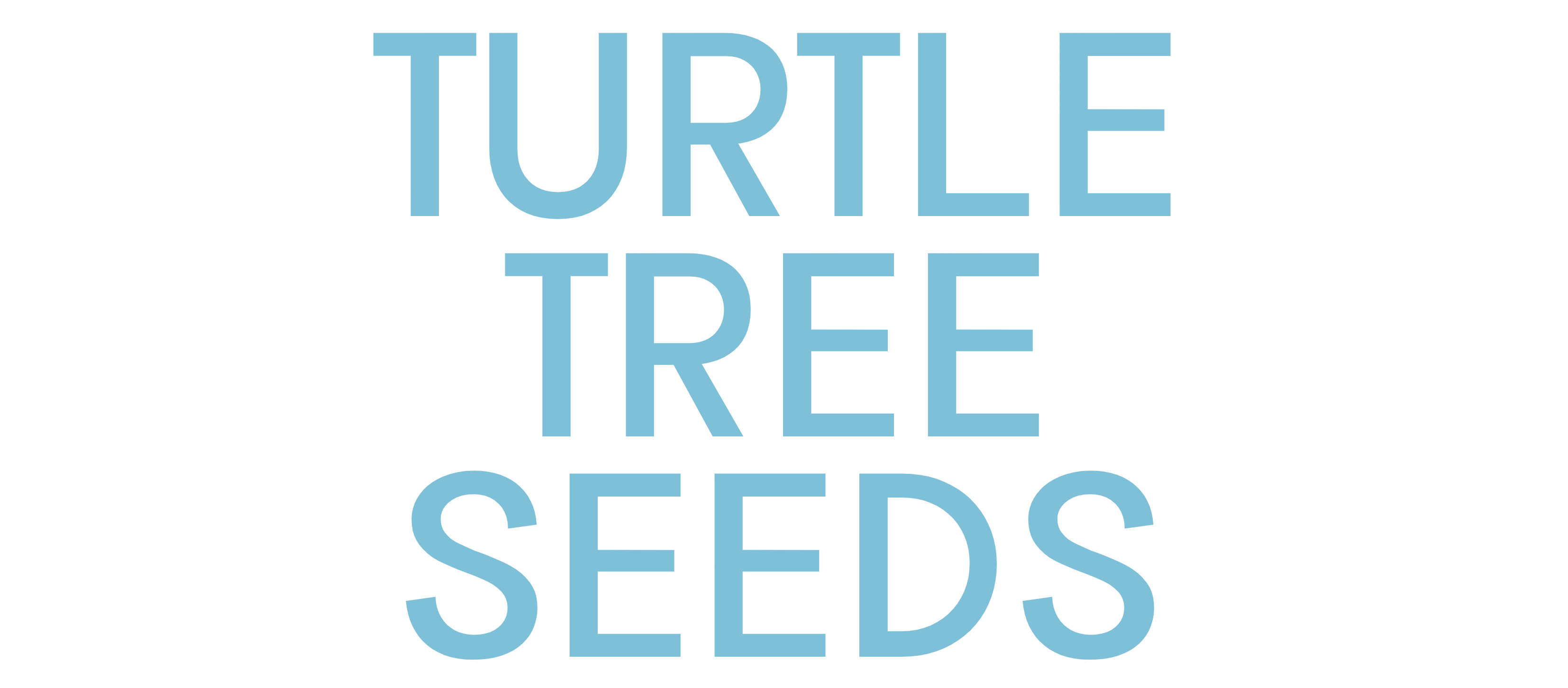Growing and Harvesting Chia Seeds
12 Essential Tips for Growing Chia Seeds Successfully

Ready to explore the realm of successful chia seed cultivation? Look no further! We are thrilled to provide you with 12 essential tips that will ensure your chia seeds thrive.
From choosing the right soil to providing adequate sunlight, we’ve got you covered. Our detailed and scientific approach will guide you through the process, helping you to produce a bountiful harvest of chia seeds.
Let’s get started on this fulfilling journey together!
Key Takeaways
- Use high-quality organic soil with a pH level between 6.0 and 7.5
- Chia seeds require at least six hours of direct sunlight daily
- Establish a consistent watering routine and avoid overwatering
- Maintain a temperature range of 65-75°F (18-24°C) for optimal growth
Choosing the Right Soil
We recommend using a high-quality organic soil for cultivating chia seeds.
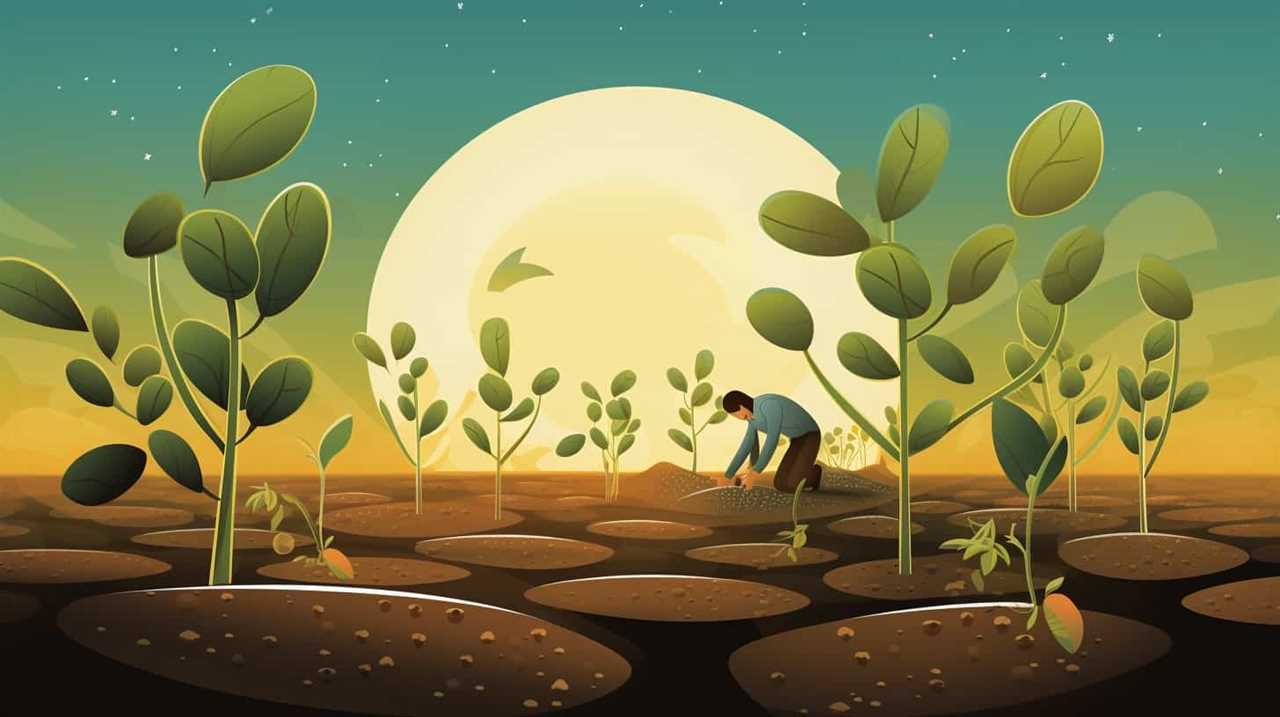
When choosing organic soil for growing chia seeds, it’s important to consider its composition. The ideal soil composition for chia seeds includes a balanced combination of organic matter, minerals, and nutrients.
Organic matter, such as compost or well-rotted manure, improves soil structure and fertility. It also helps retain moisture and provides a steady release of nutrients.
Minerals, such as calcium and potassium, are essential for the growth and development of chia plants.
Nutrients, like nitrogen, phosphorus, and potassium, support overall plant health and enhance seed production.
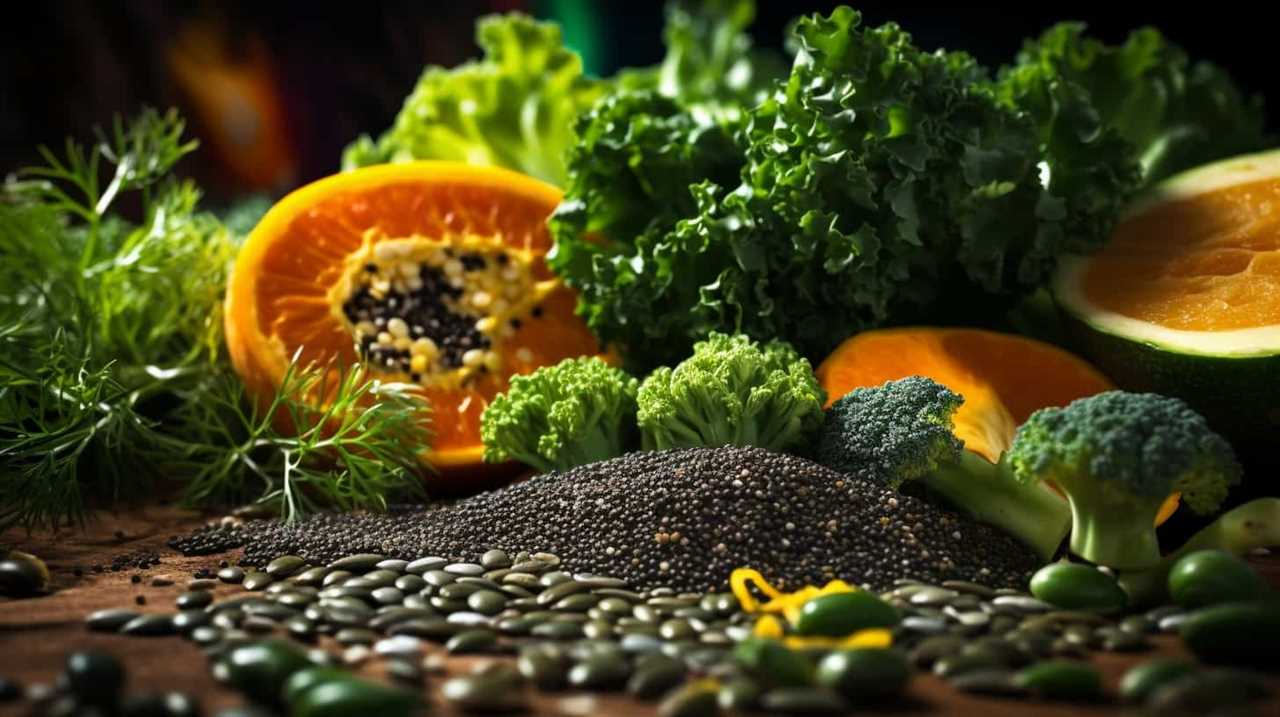
It’s crucial to select a soil with a pH level between 6.0 and 7.5, as chia plants thrive in slightly acidic to neutral conditions.
Providing Adequate Sunlight
When growing chia seeds, it’s crucial to ensure they receive adequate sunlight for proper growth and development. The duration and intensity of sunlight play a significant role in the growth of chia plants.
Additionally, if natural sunlight is limited, artificial light sources can be used to supplement the plants’ light requirements. Proper positioning and direction of sunlight exposure can further optimize the growth and productivity of chia seeds.
Sunlight Duration and Intensity
To ensure optimal growth and development of chia seeds, it’s crucial to provide them with a minimum of six hours of direct sunlight daily. Sunlight plays a vital role in the growth of chia plants, as it provides the energy needed for photosynthesis, the process by which plants convert light into chemical energy.
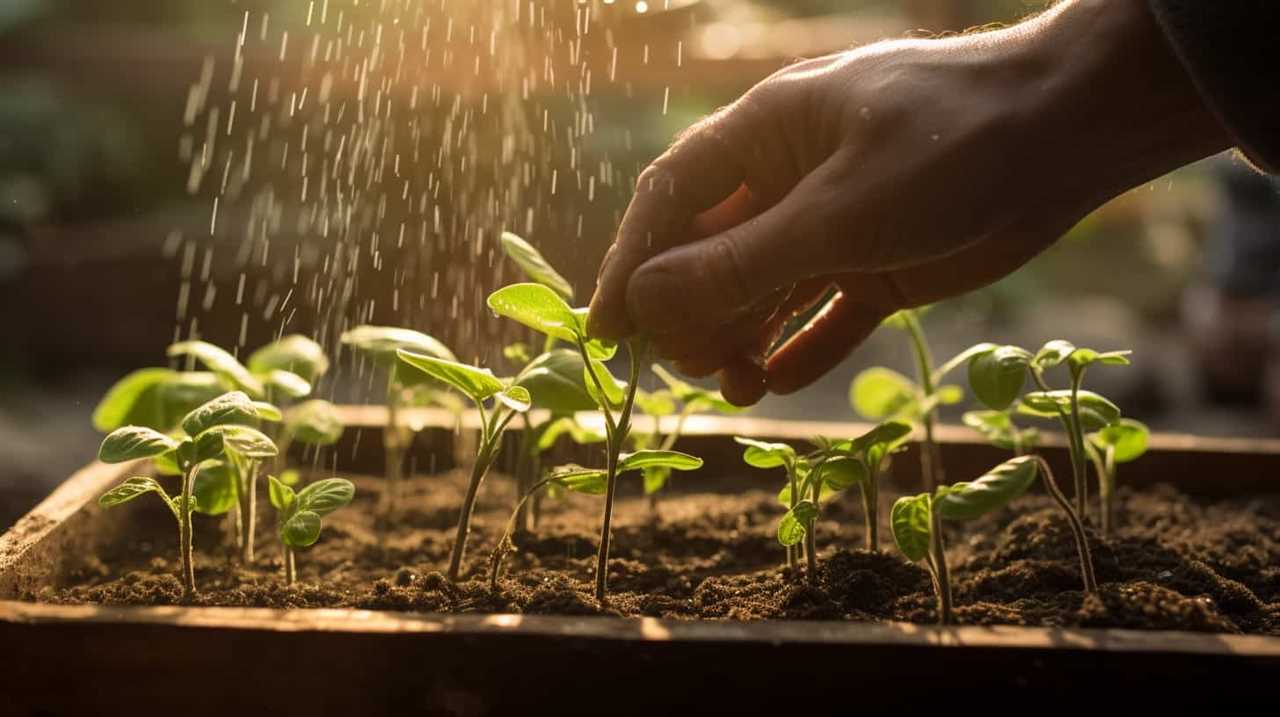
Here are three important factors to consider when it comes to sunlight duration and intensity for chia growth:
-
Sunlight intensity measurement: It’s important to ensure that the chia plants receive the right amount of light intensity. This can be measured using a light meter, which provides an accurate reading of the amount of light available to the plants.
-
Importance of sunlight for chia growth: Sunlight is essential for chia plants to produce their own food through photosynthesis. It provides the energy needed for the plants to convert carbon dioxide and water into glucose and oxygen, which are vital for their growth and development.
-
Duration of sunlight exposure: Chia plants require a minimum of six hours of direct sunlight daily to thrive. This ensures that they receive sufficient light energy for photosynthesis and overall healthy growth.
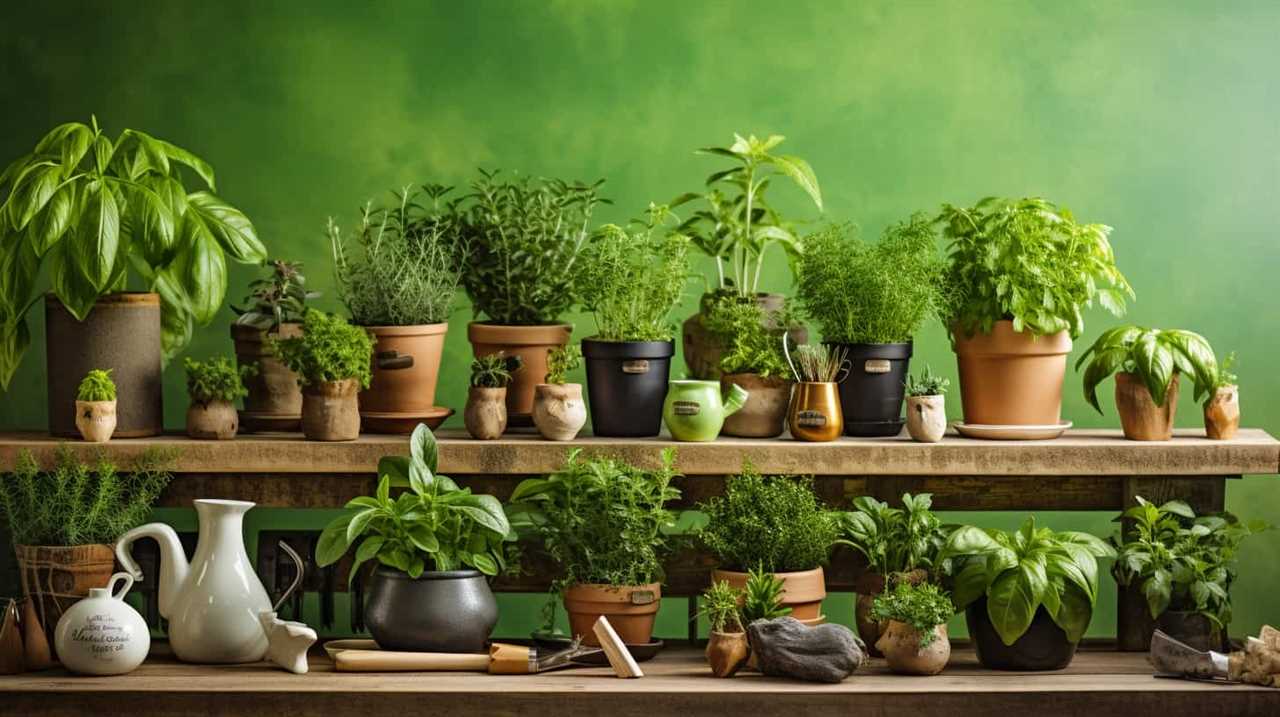
Using Artificial Light
To ensure chia plants receive adequate light for growth and photosynthesis, it’s important to consider using artificial light as a supplement. Using grow lights can provide numerous benefits for the successful cultivation of chia seeds.
One of the main advantages of artificial lighting is the ability to control the duration and intensity of light exposure. Chia plants require a minimum of 12 to 16 hours of light each day to thrive. By using artificial light, growers can ensure that their chia plants receive the optimal amount of light for their growth and development.
Additionally, artificial lighting allows for year-round cultivation, regardless of the natural sunlight availability. This is particularly beneficial for those who desire to serve others by providing a consistent supply of nutritious chia seeds.
Sunlight Positioning and Direction
To ensure optimal growth and development of chia seeds, we carefully position and direct sunlight to provide adequate light exposure. Sunlight intensity and exposure are crucial factors in promoting photosynthesis, which is essential for the production of energy and nutrients in plants. Here are three important considerations for positioning and directing sunlight:
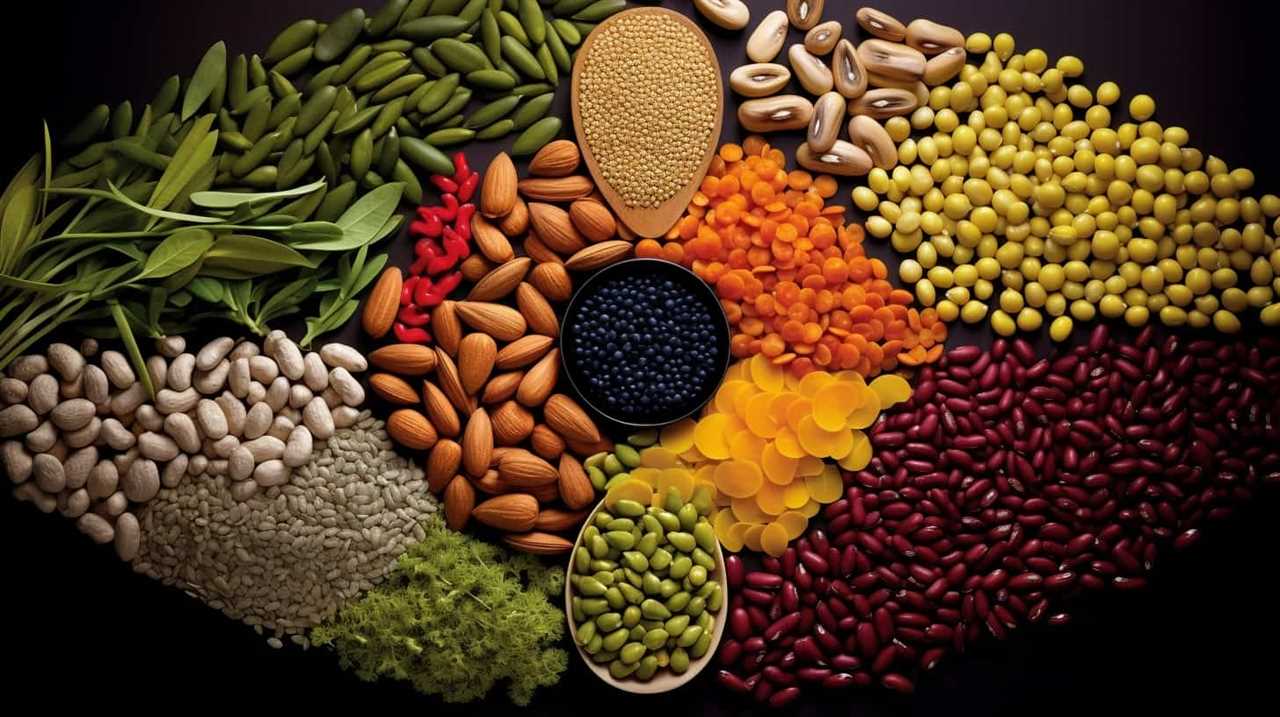
-
Sunlight Intensity: Chia seeds require moderate to high sunlight intensity for healthy growth. It’s important to choose a location that receives direct sunlight for at least six hours a day. This ensures that the chia plants receive the necessary amount of light energy to carry out photosynthesis effectively.
-
Sunlight Exposure: It’s crucial to position the chia seeds in a spot where they receive uniform sunlight exposure throughout the day. Avoid areas with excessive shade or areas that are exposed to intense, direct sunlight for prolonged periods. A balance between sunlight and shade is essential for optimal growth.
-
Sunlight Direction: Orienting the chia seeds in the right direction is vital. Place them in an area where they receive sunlight from the east in the morning and the west in the afternoon. This ensures that the chia plants receive adequate sunlight exposure throughout the day, allowing for efficient photosynthesis and healthy growth.
Deciding on the Right Container
We have found that using a large, shallow container is essential for successfully growing chia seeds. When choosing a container, consider both the materials and size.

The container should be made of a non-toxic material, such as plastic or terracotta, which won’t leach harmful chemicals into the soil. Avoid containers made of metal or treated wood, as these can potentially contaminate the chia seeds.
In terms of size, a container with a diameter of at least 12 inches is recommended to provide enough space for the chia plants to grow and spread their roots. A shallow container is preferred because chia seeds require a well-draining soil. This allows excess moisture to drain away, preventing the seeds from becoming waterlogged.
With the right container in place, we can now move on to the next crucial step: watering properly.
Watering Properly
Moving on to watering properly, it’s important to establish a consistent watering routine for your chia seeds. Here are three essential tips for proper watering techniques and avoiding overwatering:
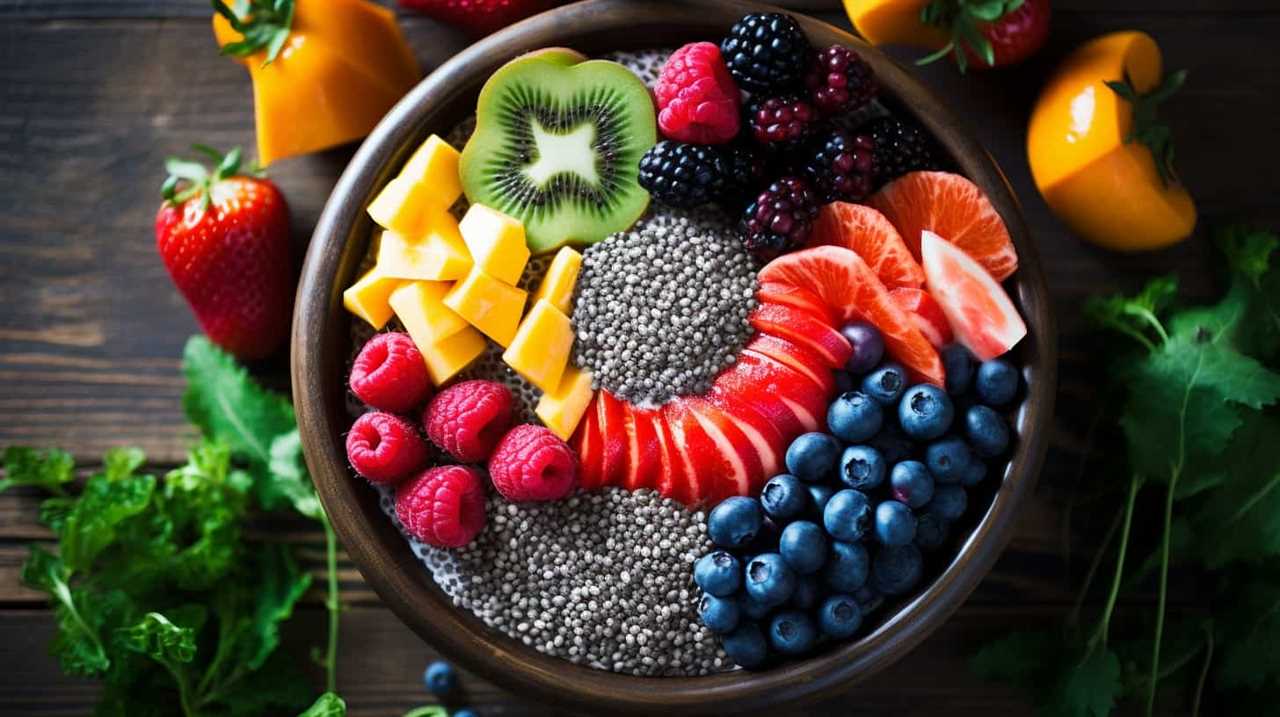
-
Monitor the soil moisture: Chia seeds thrive in well-drained soil, so it’s crucial to keep an eye on the moisture levels. Stick your finger about an inch deep into the soil, and if it feels dry, it’s time to water. Avoid watering if the soil is still moist.
-
Water deeply but infrequently: When you water, make sure to provide enough water to reach the root zone. This encourages deep root growth and helps the plant withstand drought conditions. However, be cautious not to overwater, as excessive moisture can lead to root rot.
-
Use a watering can or gentle drip irrigation: To prevent disturbing the delicate chia seedlings, opt for a gentle watering method. A watering can with a fine rose attachment or a drip irrigation system will ensure a slow and even distribution of water.
Managing Temperature and Humidity
After properly watering your chia seeds, it’s important to address the next aspect of successful growth: managing temperature and humidity.
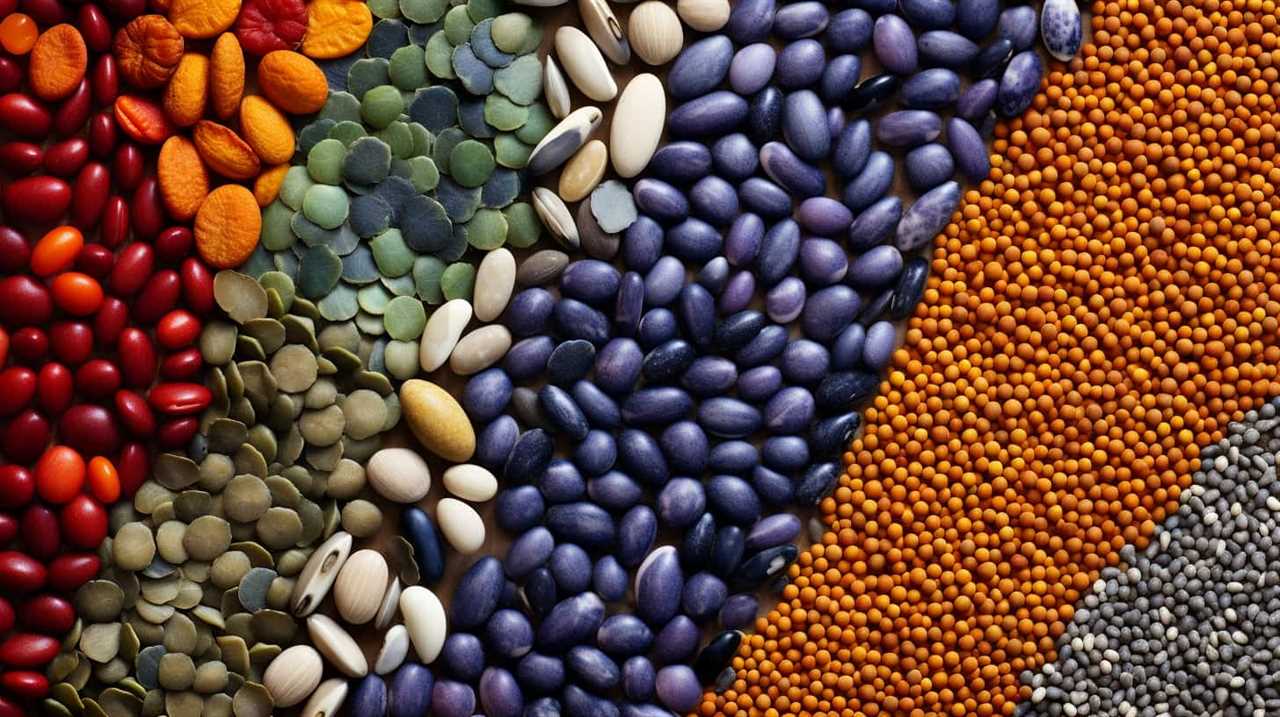
Managing air circulation is crucial for maintaining the right temperature and humidity levels for your chia seeds to thrive. Ensure that the growing area is well-ventilated to prevent stagnant air and excessive moisture buildup. This can be achieved by using fans or opening windows to promote air exchange.
Maintaining a temperature range of 65-75°F (18-24°C) is ideal for chia seed growth. Additionally, it’s crucial to prevent mold growth, which can occur in high humidity conditions. To achieve this, monitor the humidity levels in the growing area and keep them between 40-60%. This can be achieved by using a dehumidifier or placing silica gel packs near the seeds.
By managing air circulation and preventing mold growth, you’ll create the optimal environment for successful chia seed growth.
Now, let’s move on to understanding seed germination.
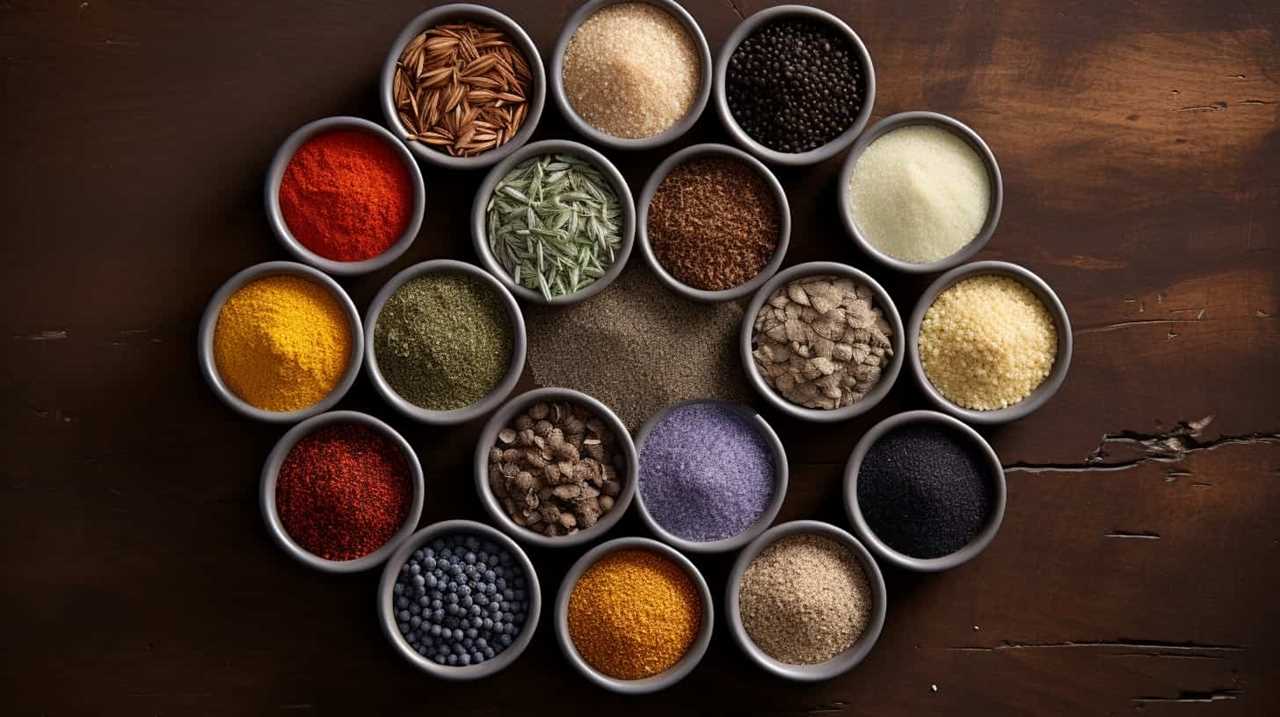
Understanding Seed Germination
When it comes to understanding seed germination, it’s crucial to create optimal conditions for the process to occur successfully. This includes providing the right amount of moisture, temperature, and light.
Troubleshooting germination issues may involve adjusting these factors or addressing any potential problems such as poor seed quality or improper planting techniques.
Optimal Germination Conditions
To ensure successful germination of chia seeds, we recommend providing optimal conditions for their growth. Here are three key factors to consider:
-
Germination Temperature: Chia seeds require a consistent temperature range of 70-85°F (21-29°C) for successful germination. This temperature provides the ideal environment for the seeds to absorb water and initiate the germination process. Maintaining a stable temperature throughout the germination period is crucial for promoting healthy seedling development.

-
Germination Time: Chia seeds typically germinate within 7-10 days under optimal conditions. It’s important to monitor the progress of germination by checking for the emergence of tiny sprouts. If the seeds don’t germinate within this timeframe, it may indicate issues with temperature, moisture levels, or seed quality.
-
Moisture Control: During germination, chia seeds require consistent moisture levels. Ensure that the growing medium remains moist but not overly saturated. Using a spray bottle or misting system can help maintain the right moisture balance.
By providing the appropriate germination temperature, monitoring germination time, and controlling moisture levels, you can create the ideal conditions for chia seed germination.
Now, let’s delve into troubleshooting germination issues.
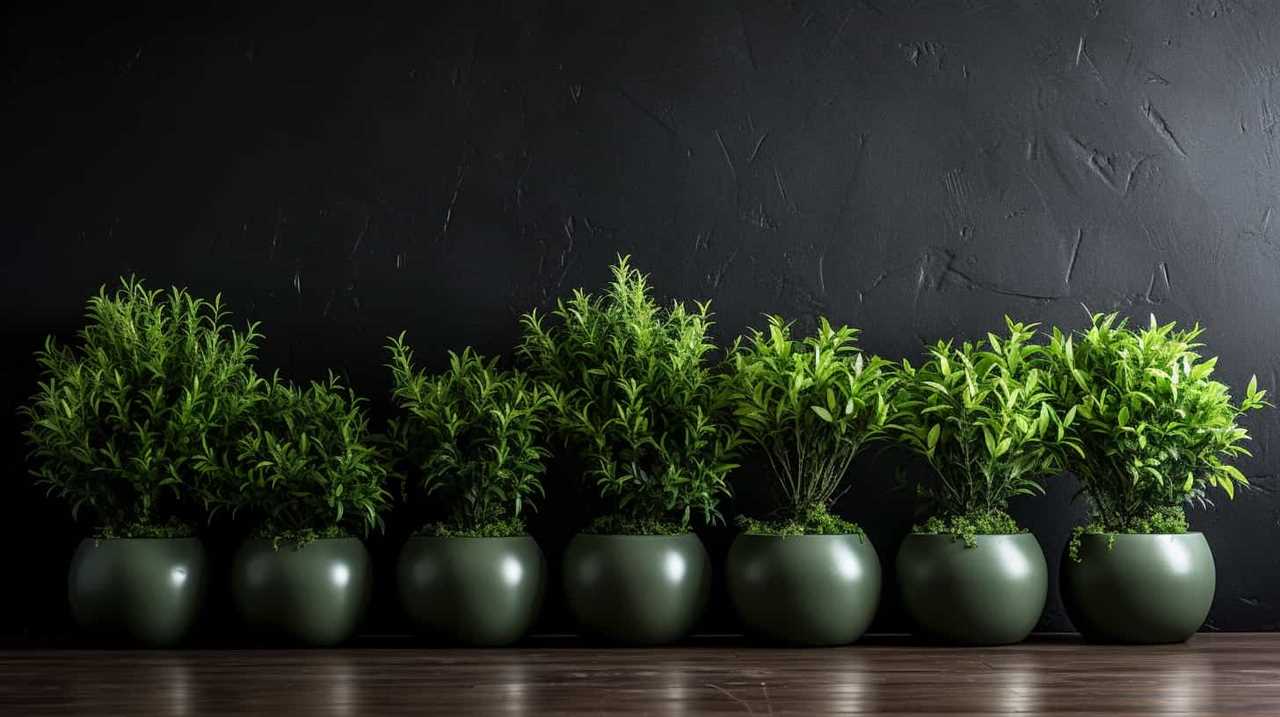
Troubleshooting Germination Issues
Now let’s address any potential issues that may arise during chia seed germination and how to troubleshoot them. Ensuring a successful germination process is crucial for achieving a high yield of healthy chia plants. Two common problems that may occur are low yield and mold growth. By understanding these issues and taking appropriate preventive measures, you can maximize the germination success rate.
To troubleshoot low yield, it is important to first assess the quality of the seeds. Poor quality seeds may have low viability, resulting in low germination rates. Therefore, it is recommended to source seeds from reputable suppliers. Additionally, factors such as insufficient moisture, incorrect temperature, or inadequate light can also contribute to low yield. Monitoring and adjusting these conditions accordingly can help improve germination rates.
Mold growth can be a common problem during germination. To prevent mold growth, ensure proper drainage by using well-draining soil or a seed-starting mix. Overwatering should be avoided, as excessive moisture can create a favorable environment for mold. Proper ventilation and air circulation are also crucial in preventing mold growth. If mold does appear, gently remove the affected seeds and apply a natural fungicide to the remaining healthy seeds.
In summary, troubleshooting low yield and preventing mold growth are essential for successful chia seed germination. By addressing these issues and implementing preventive measures, you can increase your chances of achieving a high germination rate and healthy chia plants.
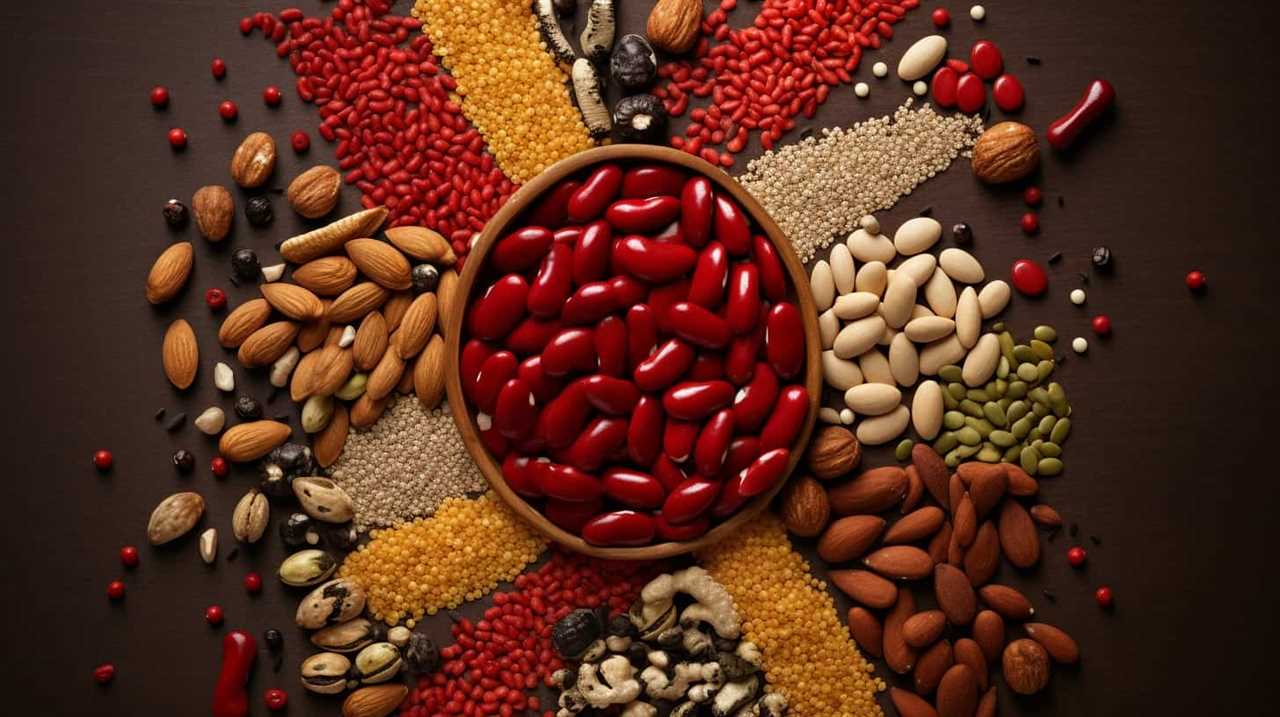
| Issue | Troubleshooting Steps |
|---|---|
| Low yield | – Source seeds from reputable suppliers |
- Ensure proper moisture, temperature, and light
- Monitor and adjust conditions |
| Mold growth | – Use well-draining soil or seed-starting mix - Avoid overwatering
- Ensure proper ventilation and air circulation
- Apply fungicide if necessary |
Fertilizing for Healthy Growth
As we focus on achieving healthy growth for chia seeds, it’s important to consider the benefits of fertilizing. Proper fertilizer application can provide the necessary nutrients for chia plants to thrive. Here are three key factors to keep in mind when it comes to fertilizing chia seeds:
-
Nutrient requirements: Chia plants have specific nutrient needs, particularly for nitrogen, phosphorus, and potassium. Nitrogen promotes leaf and stem growth, while phosphorus aids in root development. Potassium is essential for overall plant health and disease resistance.
-
Timing: It’s crucial to apply fertilizer at the right time during the chia plant’s growth cycle. Typically, fertilizing should be done during the early stages of growth to support root establishment and throughout the growing season to provide a continuous supply of nutrients.
-
Organic options: Consider using organic fertilizers, such as compost or well-rotted manure, to meet the nutrient requirements of chia plants. Organic fertilizers not only provide essential nutrients but also improve soil structure and fertility.
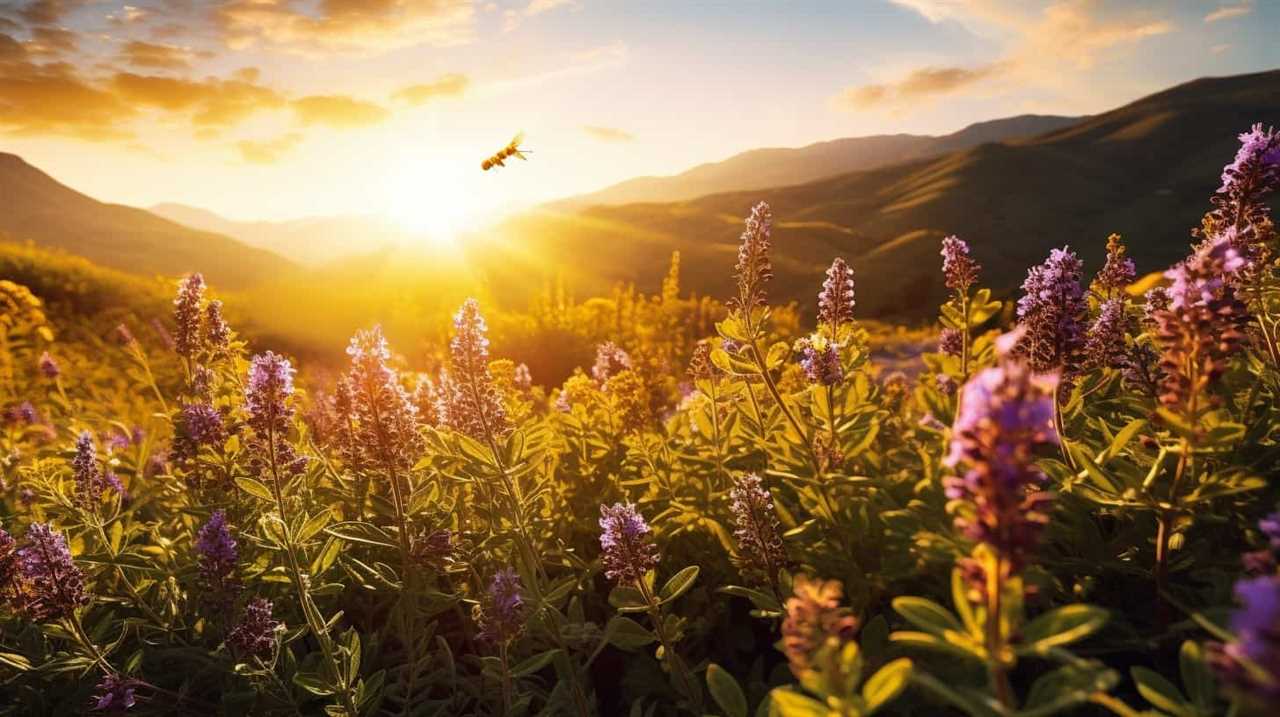
Controlling Pests and Diseases
Continuing our focus on achieving healthy growth for chia seeds, an important aspect to consider is controlling pests and diseases using effective strategies.
To prevent soil erosion and protect the chia plants from pests, it’s crucial to implement natural pest control methods. One effective method is companion planting, which involves growing chia seeds alongside plants that repel pests or attract beneficial insects. For example, planting marigolds near chia plants can deter nematodes and other harmful insects.
Additionally, using organic insecticides, such as neem oil or garlic spray, can help control pests without harming the chia plants or the environment.
Regularly monitoring the plants for signs of pests or diseases and promptly addressing any issues can also minimize damage and ensure healthier growth.

Pruning and Thinning Seedlings
To ensure optimal growth and development of chia seedlings, we need to prioritize the important task of pruning and thinning them. Pruning techniques and thinning methods play a crucial role in maintaining the health and vigor of the plants. Here are three key practices to consider:
-
Pruning dead or diseased seedlings: Regularly inspect your chia seedlings and remove any dead or diseased ones. This helps prevent the spread of diseases and ensures that the remaining seedlings receive adequate nutrients and sunlight for growth.
-
Thinning overcrowded seedlings: When chia seedlings are overcrowded, they compete for resources, leading to stunted growth. Thin out the excess seedlings by gently pulling them out, leaving enough space between the remaining plants for optimal growth.
-
Prune for bushier growth: To encourage bushier growth, pinch off the top of the chia seedlings once they reach a height of about six inches. This promotes lateral branching and results in a more compact and productive plant.
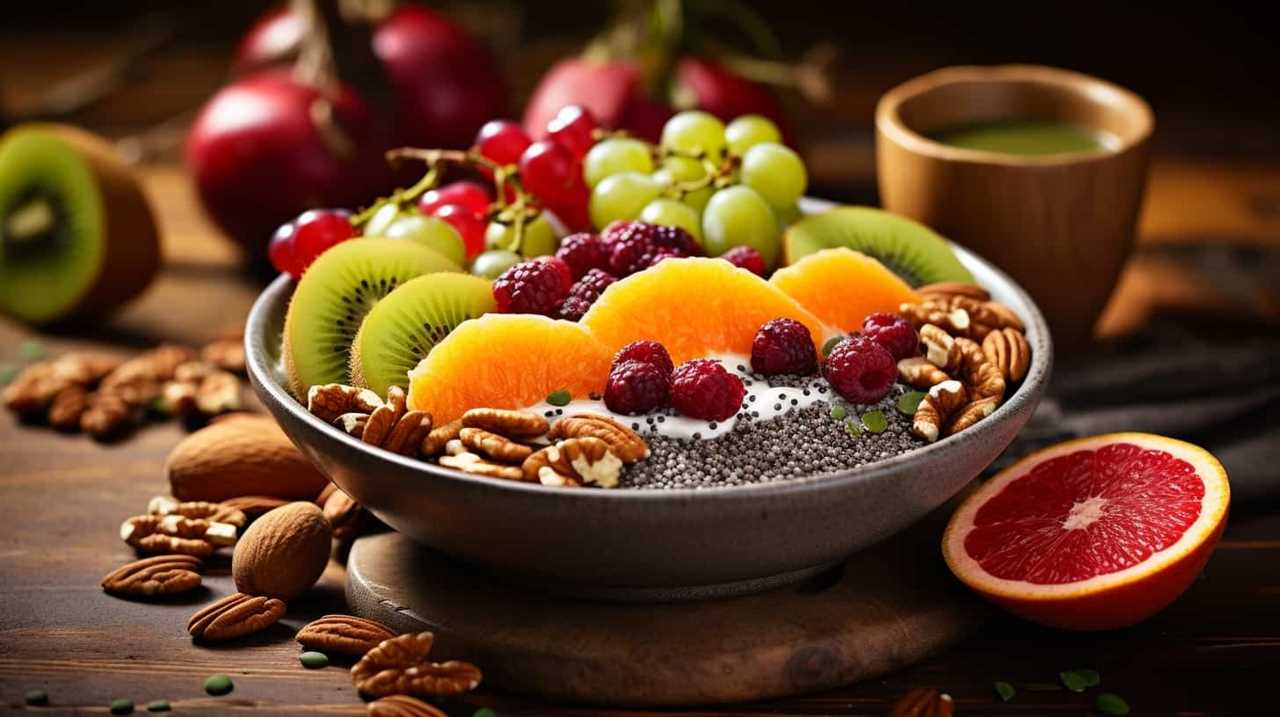
Supporting Tall Chia Plants
We can further enhance the growth and stability of our chia plants by providing necessary support for their tall stems. Supporting chia plants is crucial to prevent stem breakage, which can hinder their overall growth and productivity.
To support the tall stems, we can use various methods such as staking, trellising, or caging. Staking involves inserting a sturdy support, such as a bamboo stake, into the ground next to the plant and tying the stem to the stake with a soft material like twine.
Trellising involves constructing a framework of vertical poles and horizontal strings to support the plants as they grow. Caging, on the other hand, uses wire mesh or other materials to create a cage-like structure around the plant, providing support from all sides.
Whichever method we choose, it’s essential to ensure that the support is strong enough to withstand strong winds and other environmental factors.
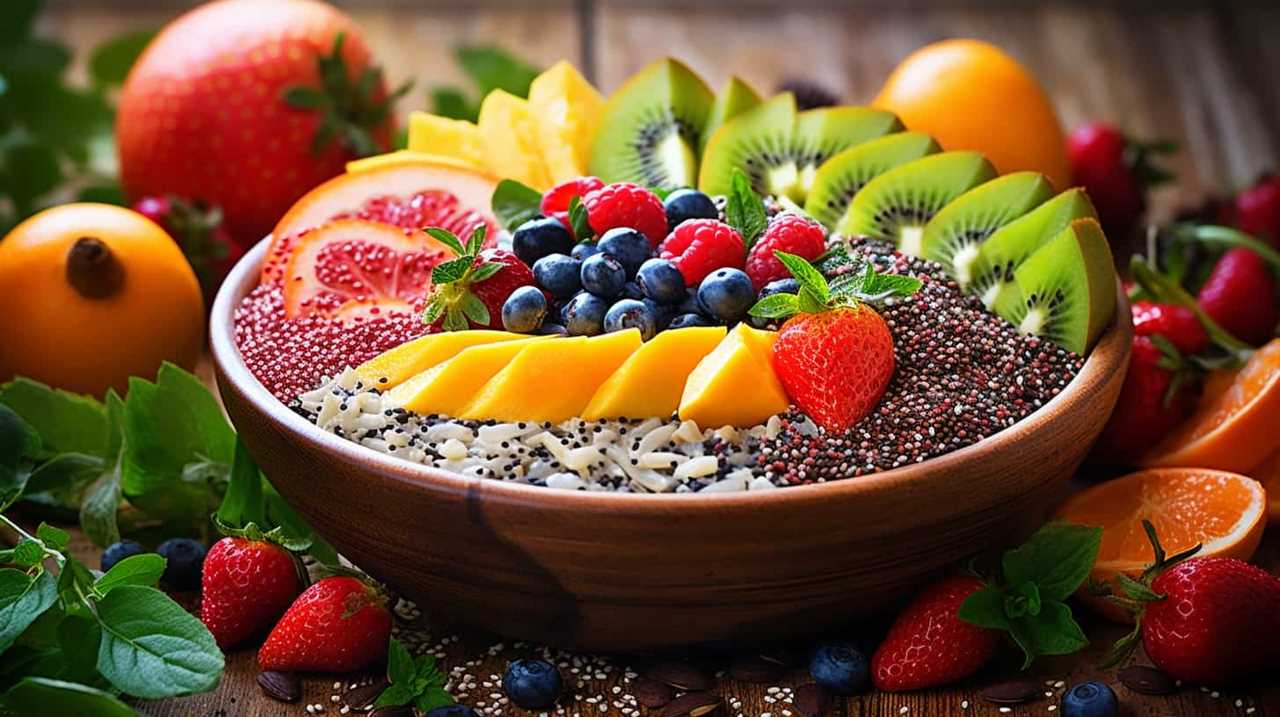
Harvesting Chia Seeds
To ensure a bountiful harvest of chia seeds, it’s important to carefully time the process of collecting the mature seed heads. Here are three essential steps to follow for successful chia seed harvesting:
-
Monitoring Seed Head Maturity: Regularly inspect the chia plants for signs of maturity. The seed heads should turn brown and dry out, indicating that the seeds are ready for harvesting. Avoid harvesting too early as it may result in underdeveloped seeds.
-
Harvesting Technique: Gently remove the mature seed heads from the chia plants. Use pruning shears or scissors to cut the stems about an inch below the seed heads. Handle the seed heads with care to prevent damage and loss of seeds.
-
Seed Extraction and Drying: Place the seed heads in a large bag or container and gently crush them to release the chia seeds. Separate the seeds from the debris and spread them out on a clean, dry surface. Allow the seeds to air dry completely before storing them in an airtight container.
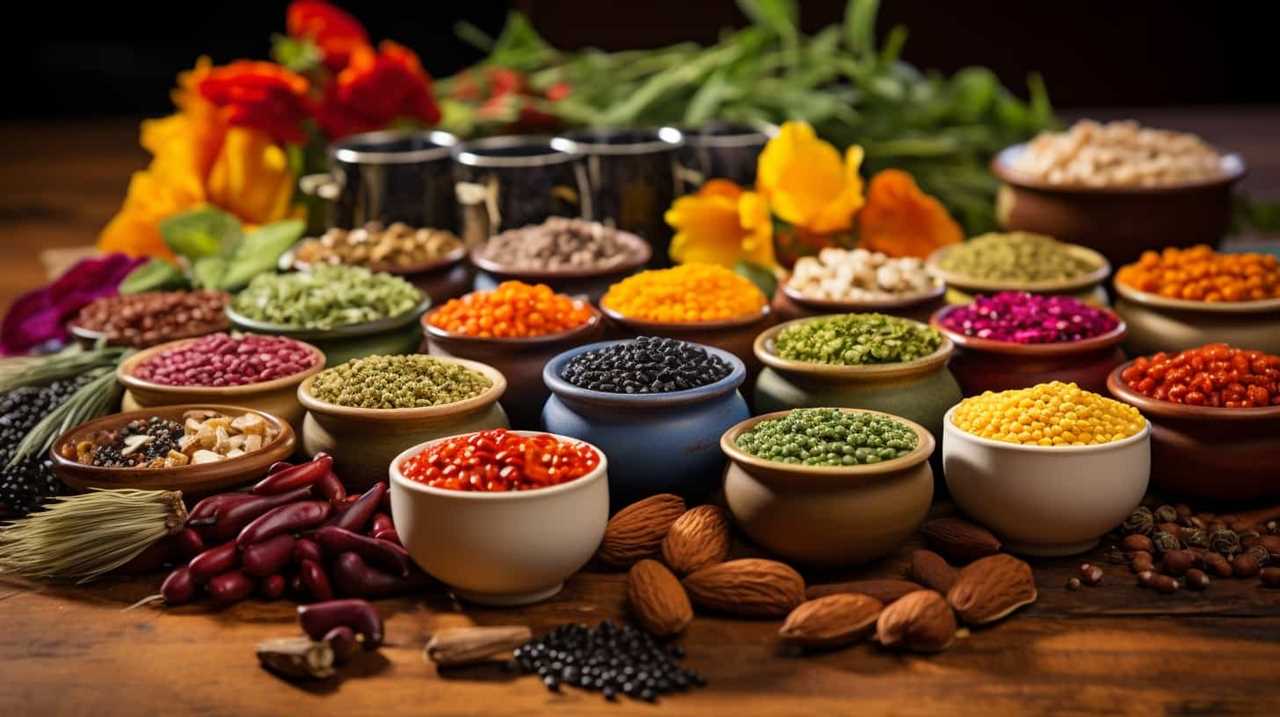
Storing and Using Chia Seeds
After successfully harvesting chia seeds, the next step is to properly store and utilize them. Storing chia seeds correctly is crucial to maintain their freshness and nutritional value.
One recommended method is to store them in an airtight container in a cool and dark place, such as a pantry or refrigerator. This helps to prevent the seeds from becoming rancid or losing their beneficial properties.
When using chia seeds, it’s important to soak them in water or another liquid before consuming. This allows the seeds to absorb the liquid and form a gel-like consistency, which enhances their digestibility and nutrient absorption.
The benefits of chia seeds include their high fiber content, which promotes digestive health, and their omega-3 fatty acids, which support heart health. Incorporating these storing methods and utilizing chia seeds in your daily diet can help you reap these health benefits.
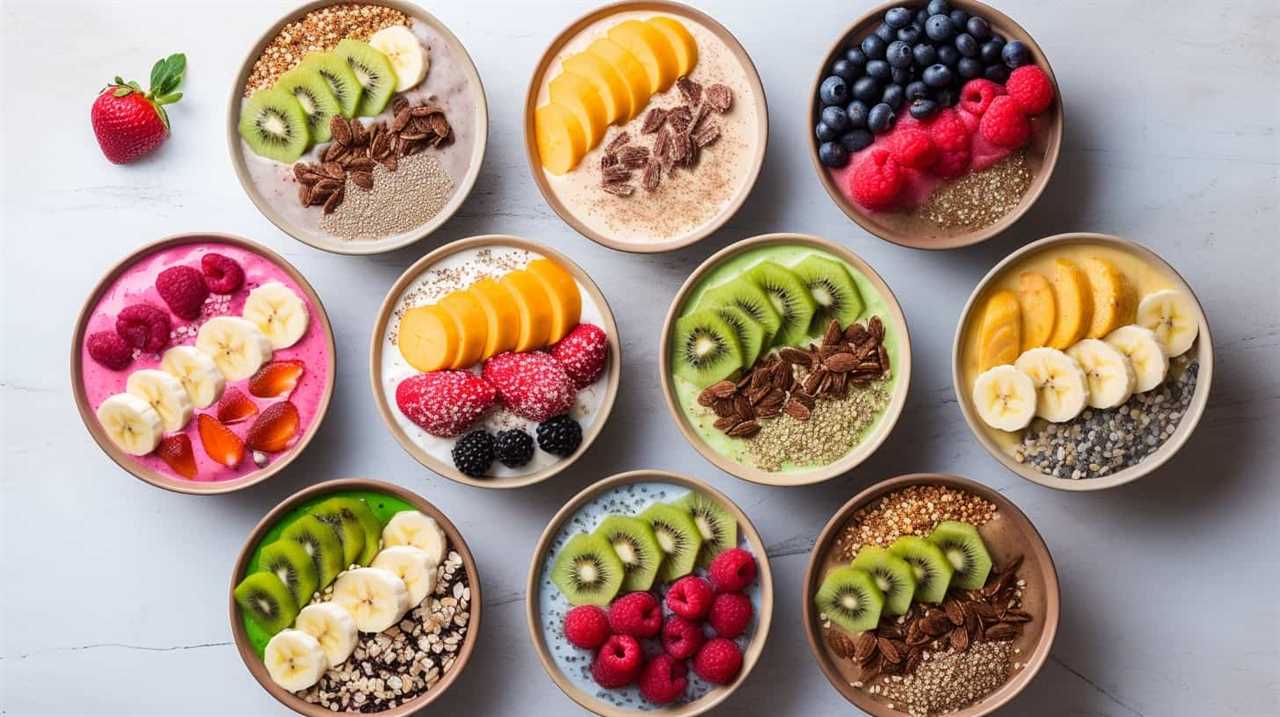
Frequently Asked Questions
How Long Does It Take for Chia Seeds to Germinate?
Chia seeds typically germinate within 7 to 10 days under optimal growing conditions. Providing a warm and moist environment, along with proper sunlight exposure, can help speed up the germination time.
Can Chia Seeds Be Grown Indoors?
Yes, chia seeds can be grown indoors. To ensure successful growth, provide the best indoor conditions: a well-draining potting mix, consistent moisture, and a warm temperature of around 70°F.
How Often Should Chia Seeds Be Watered?
We water our chia seeds according to a consistent watering schedule to ensure optimal hydration. Following these tips for chia seed hydration helps us maintain healthy growth and yield.
Can Chia Plants Tolerate Cold Temperatures?
Certainly! Chia plants exhibit varying degrees of cold tolerance, depending on the species and cultivar. To ensure successful overwintering, it is crucial to implement proper strategies such as mulching and providing protective covers.
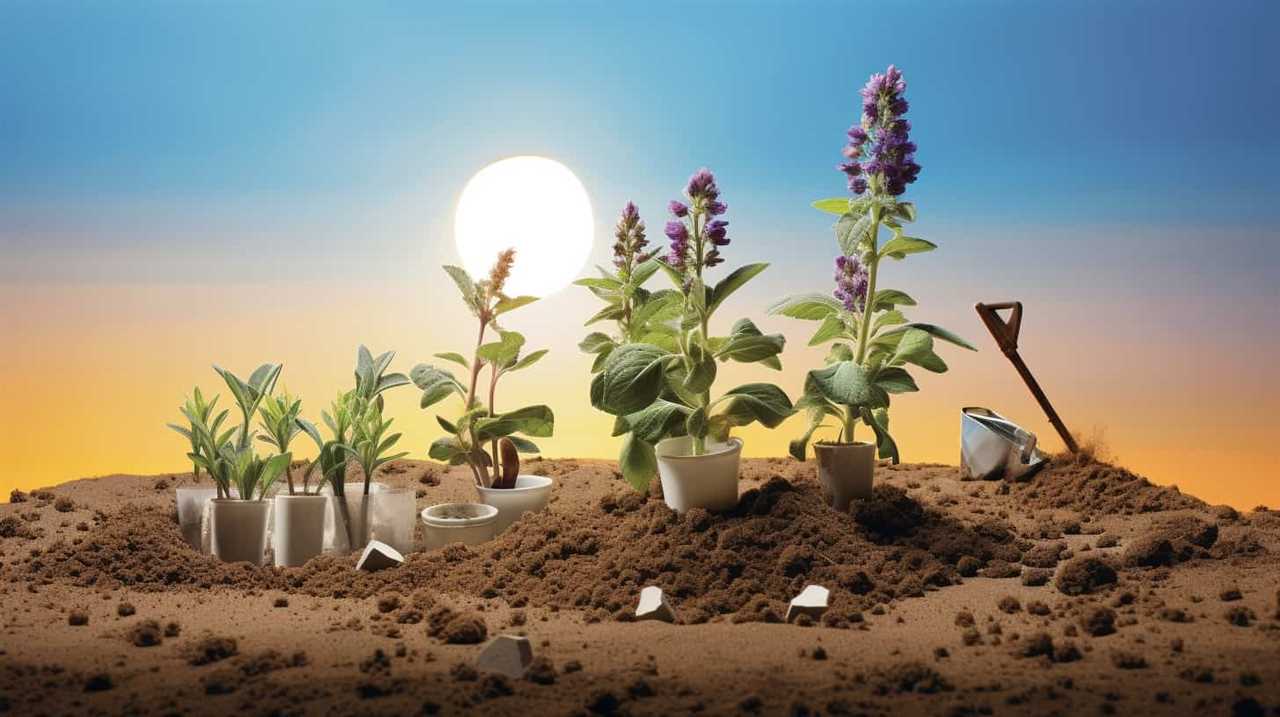
How Can I Prevent Pests From Attacking My Chia Plants?
Preventive measures are crucial in natural pest control for chia plants. We can safeguard our plants by implementing strategies like companion planting, applying organic insecticides, and regularly inspecting for signs of infestation.
Conclusion
In conclusion, by following these 12 essential tips for growing chia seeds successfully, you can ensure a bountiful harvest of this nutritious superfood.
While some may argue that growing chia seeds requires too much effort and attention to detail, the satisfaction of nurturing these plants and reaping the rewards of their nutrient-rich seeds far outweighs any perceived challenges.
So, embrace the scientific approach, invest in proper care, and enjoy the abundant benefits of growing chia seeds in your own garden.
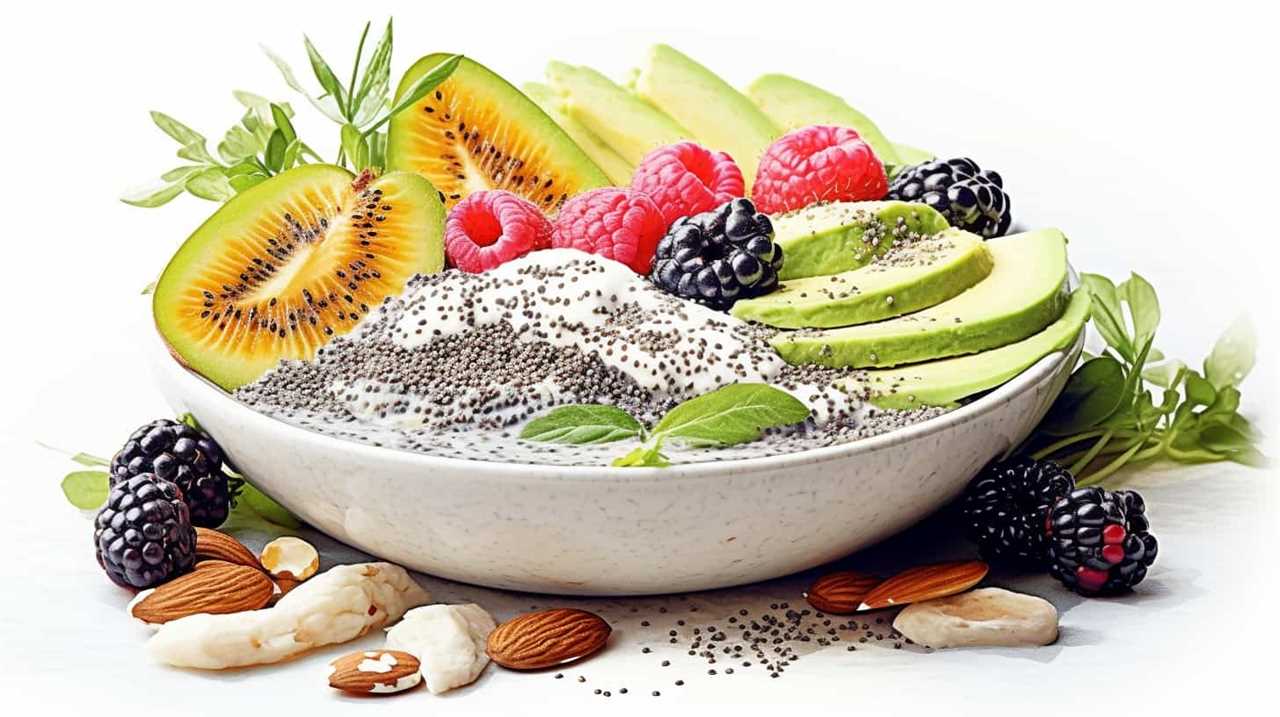
Hi, I’m Sarah. I write for Turtle Tree Seeds, a news blog that loves food – all kinds of food. But especially bacon, chocolate, and veggies. We’re on a mission to show the world that you can enjoy all of those things, even kale and brussels sprouts. Because we believe that when it comes to food, there’s no such thing as guilty pleasures. Just pleasures.
I’m also a huge fan of puns (obviously).
Growing and Harvesting Chia Seeds
Your Guide to Successfully Harvesting Chia Seeds

Did you know that chia seeds are packed with essential nutrients and can be easily grown and harvested in your own backyard?
In this guide, we’ll show you how to successfully harvest chia seeds, step by step. Our evidence-based tips and practical advice will help you identify the perfect time to harvest, prepare the plants, and handpick the ripe seeds.
Plus, we’ll share expert tips on drying and storing your chia seeds for long-lasting freshness.
Let’s get started on your chia seed harvesting journey!
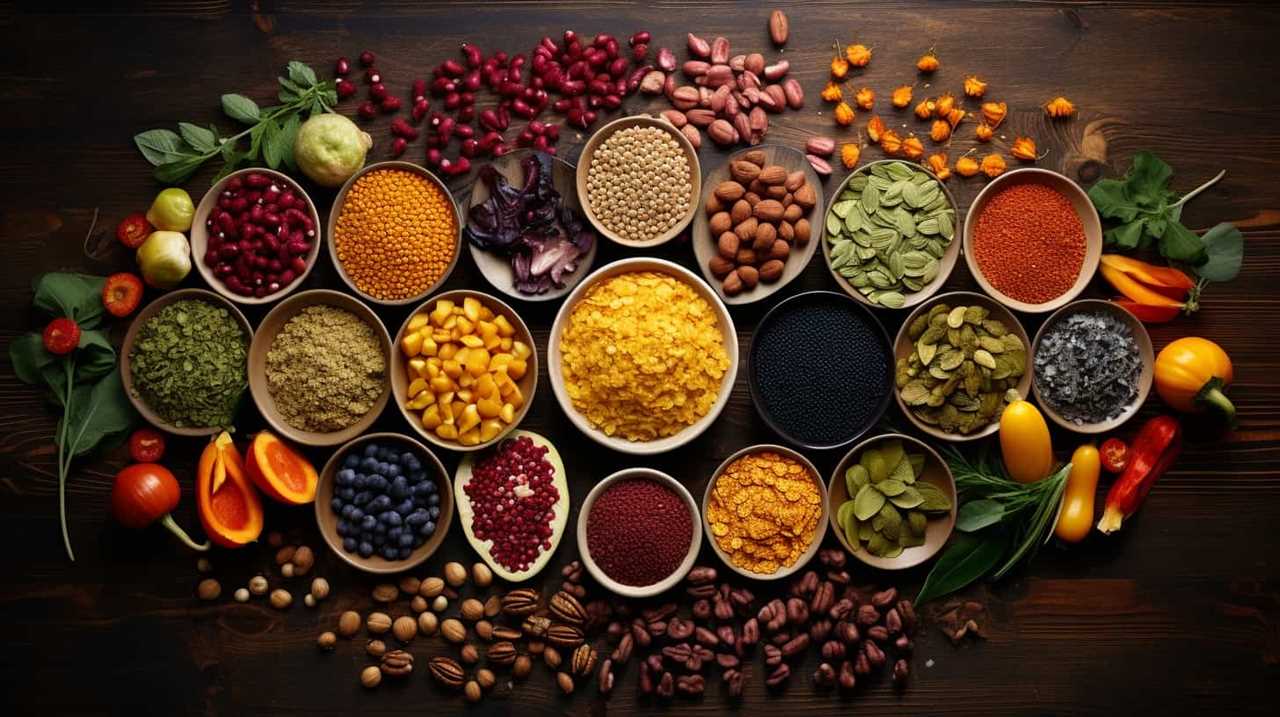
Key Takeaways
- Chia seeds require warm temperatures between 70-80°F (21-27°C) for proper development.
- Monitoring soil moisture levels is vital for chia seed maturity.
- Gently touch the seeds to evaluate seed moisture, they should feel dry to the touch.
- Harvest chia seeds when the plant is fully matured with dried flower heads and brown seeds.
Choosing the Right Time to Harvest
We carefully consider the optimal timing for chia seed harvest to ensure maximum yield and quality. Maximizing chia seed yield is crucial for those who desire to serve others with the best possible products.
Several factors affect chia seed maturity, and understanding these can help determine the right time for harvest. Firstly, temperature plays a significant role. Chia seeds require warm temperatures for proper development, typically between 70-80°F (21-27°C).
Additionally, the length of daylight hours affects the seed maturity process. Chia plants need a certain number of hours of daylight to reach full maturity.
Lastly, monitoring the moisture levels in the soil is vital. Chia plants thrive in well-drained soils, and excessive moisture can delay seed maturity.

By carefully considering these factors, we can ensure that we harvest chia seeds at the right time to maximize yield and quality.
Now, let’s move on to identifying signs of ripeness.
Identifying Signs of Ripeness
To determine the optimal time for harvesting chia seeds, let’s now delve into the process of identifying signs of ripeness. Here are some key indicators to help you evaluate the ripeness of your chia seeds:
-
Evaluating seed moisture: Gently touch the seeds and check for dryness. They should feel dry to the touch and not sticky or moist.
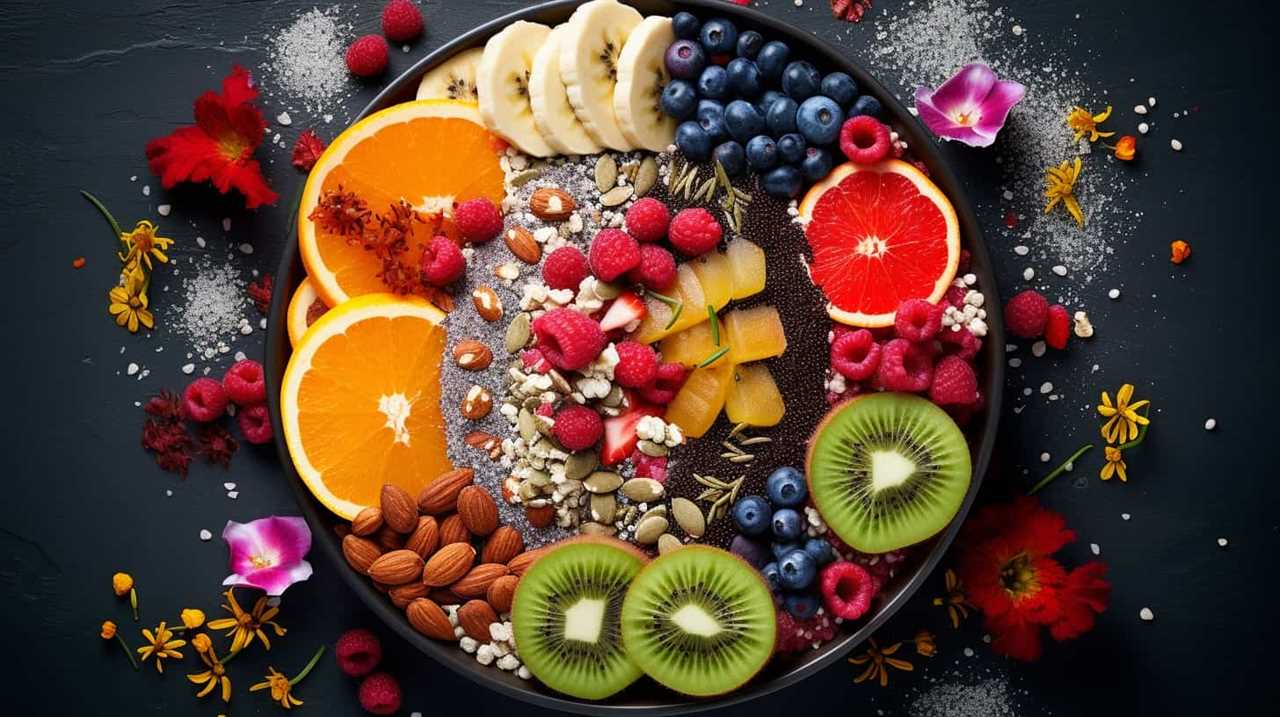
-
Testing seed coloration: Look for a uniform color throughout the seeds. They should appear dark brown or black, indicating full maturity.
-
Observing seed size: Mature chia seeds tend to be larger in size compared to immature ones. Look for plump and well-developed seeds.
-
Monitoring seed shedding: As the chia plant reaches maturity, the seeds will start to fall off the plant naturally. Keep an eye out for seed shedding as a sign that they’re ready for harvest.
By keeping these signs in mind, you’ll be able to confidently determine the ripeness of your chia seeds and harvest them at their peak freshness.
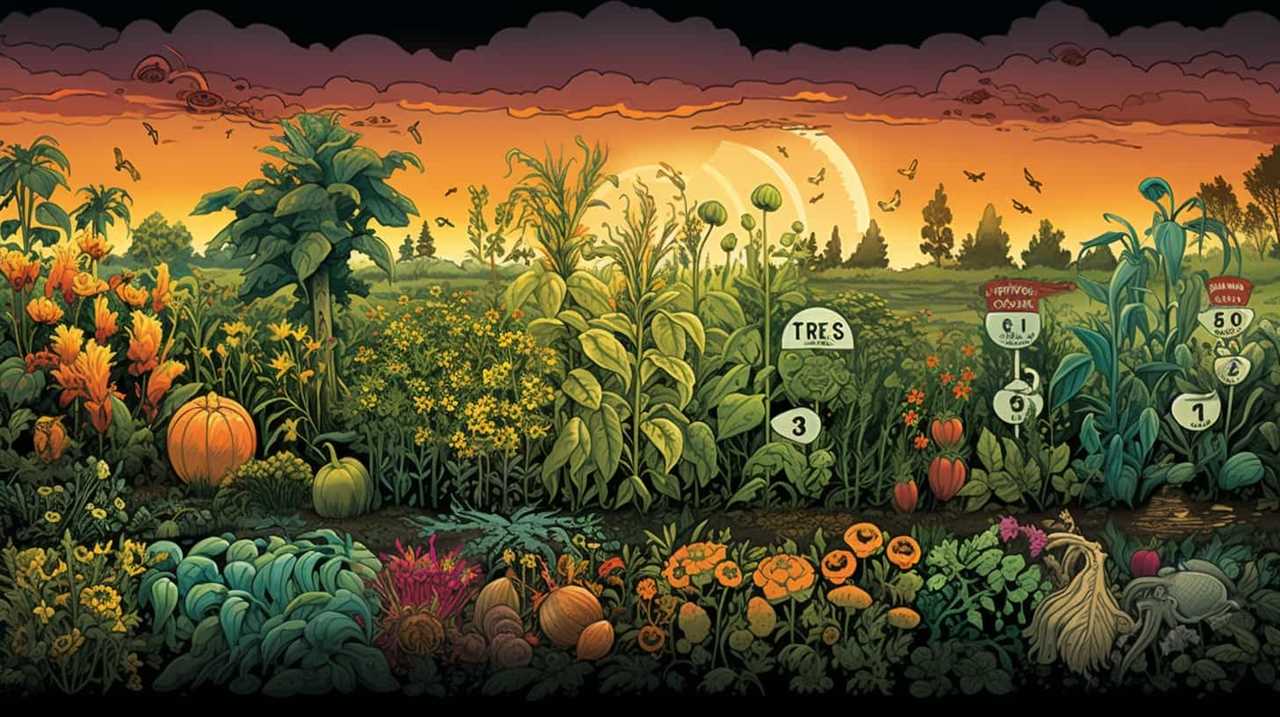
Happy harvesting!
Preparing the Plants for Harvesting
Once the signs of ripeness have been identified, it’s important to take the necessary steps to prepare the chia plants for harvesting. To ensure a successful harvest, proper soil preparation is essential.
Start by clearing any weeds or debris from the planting area and loosening the soil using a garden fork or tiller. Chia plants thrive in well-drained soil, so consider adding organic matter such as compost or aged manure to improve soil structure and fertility.
Additionally, pest control is crucial in maintaining healthy chia plants. Check for any signs of insect infestation or disease and take appropriate measures to address them. This may involve using natural pest control methods or organic insecticides. Regularly monitor the plants for any signs of damage and promptly address any issues that arise.
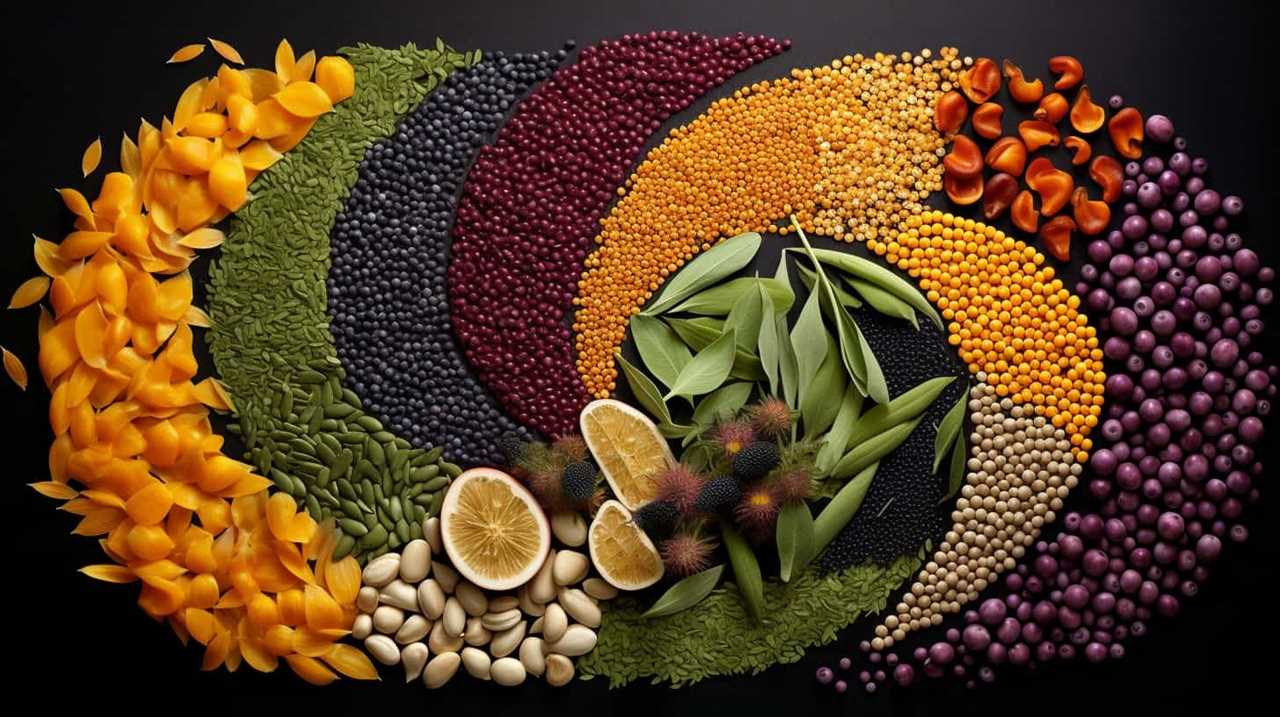
Harvesting Chia Seeds by Hand
Efficiency is key when it comes to harvesting chia seeds by hand. To maximize your chia seed yield during hand harvesting, consider the following tips:
- Begin harvesting when the chia plant is fully matured, indicated by the dried flower heads and brown seeds.
- Use a pair of sharp scissors or shears to cut the seed heads off the plant, making sure to leave a few inches of stem attached.
- Place a collection container, such as a bucket or bag, underneath the plant to catch the falling seeds.
- After harvesting, gently rub the seed heads between your hands to remove any remaining seeds.
While hand harvesting chia seeds may require more time and effort compared to mechanical harvesting, it offers several advantages. It allows for selective harvesting, where only ripe seed heads are collected, ensuring better seed quality. Additionally, hand harvesting allows for a more intimate connection with the plants and a deeper appreciation for the process.
Drying and Storing Chia Seeds
After hand harvesting chia seeds, the next step is to properly dry and store them. To ensure optimal drying, spread the seeds in a single layer on a clean, dry surface. Avoid direct sunlight and high humidity, as they can affect the quality of the seeds. Allow the seeds to air dry for about two to three days or until they’re completely dry and crispy.
Once dried, transfer the seeds to an airtight container to prevent moisture and pests from entering. For long term storage, store the container in a cool, dark place, such as a pantry or refrigerator. This will help maintain the freshness and nutritional value of the chia seeds for up to two years. Remember to label the container with the date of harvest to keep track of their freshness.
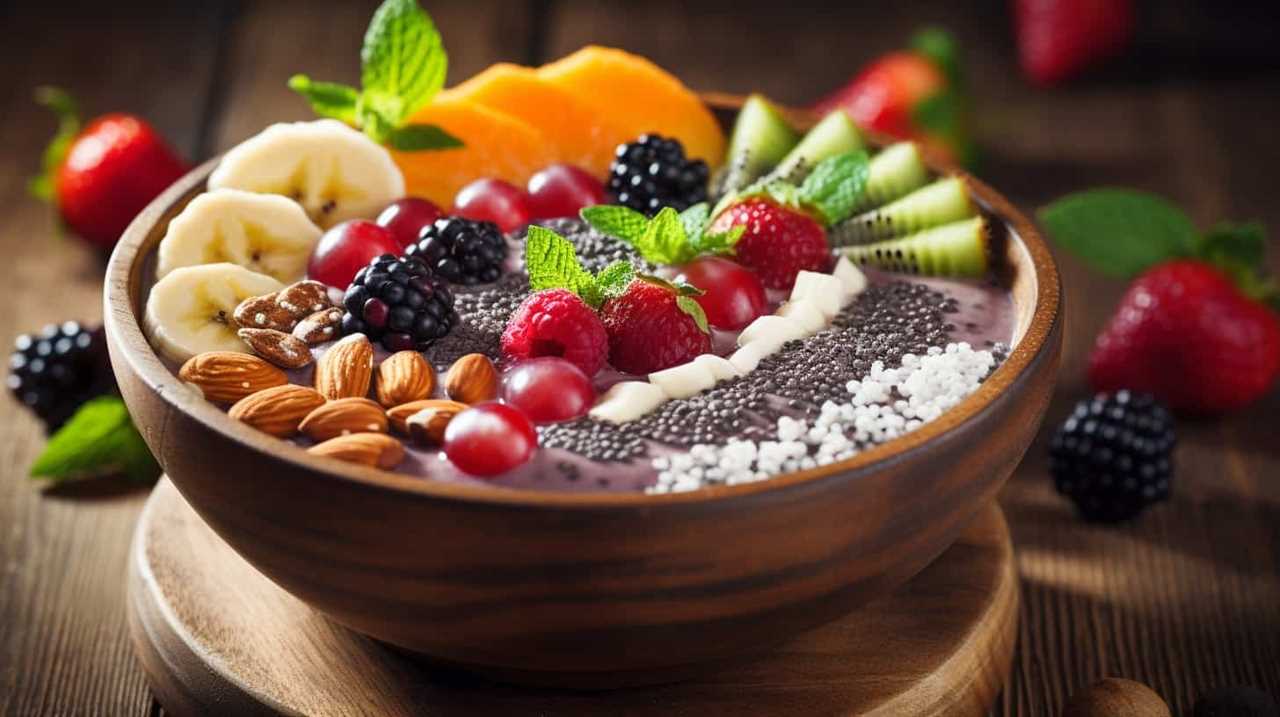
Frequently Asked Questions
Can Chia Seeds Be Harvested From Any Type of Chia Plant?
Yes, chia seeds can be harvested from any type of chia plant. However, there are challenges in chia seed cultivation, but the benefits of harvesting them at their peak ripeness outweigh the difficulties.
How Long Does It Take for Chia Seeds to Ripen From the Time of Flowering?
When is the best time to harvest chia seeds? How do you know if chia seeds are ready to be harvested? It usually takes about 2-3 weeks for chia seeds to ripen from the time of flowering.
Are There Any Specific Tools or Equipment Required for Harvesting Chia Seeds by Hand?
When harvesting chia seeds by hand, there are a few essential tools that can make the process easier. Some common tools include a mesh screen, a bucket, and a pair of gloves. These tools help prevent common mistakes and ensure successful harvesting techniques.
Can Chia Seeds Be Harvested in Multiple Stages, or Is It Best to Wait Until All Seeds Are Fully Ripened?
Yes, chia seeds can be harvested in multiple stages. However, it is best to wait until all seeds are fully ripened for optimal flavor and nutritional value. Patience and timing are key in successful chia seed harvesting.
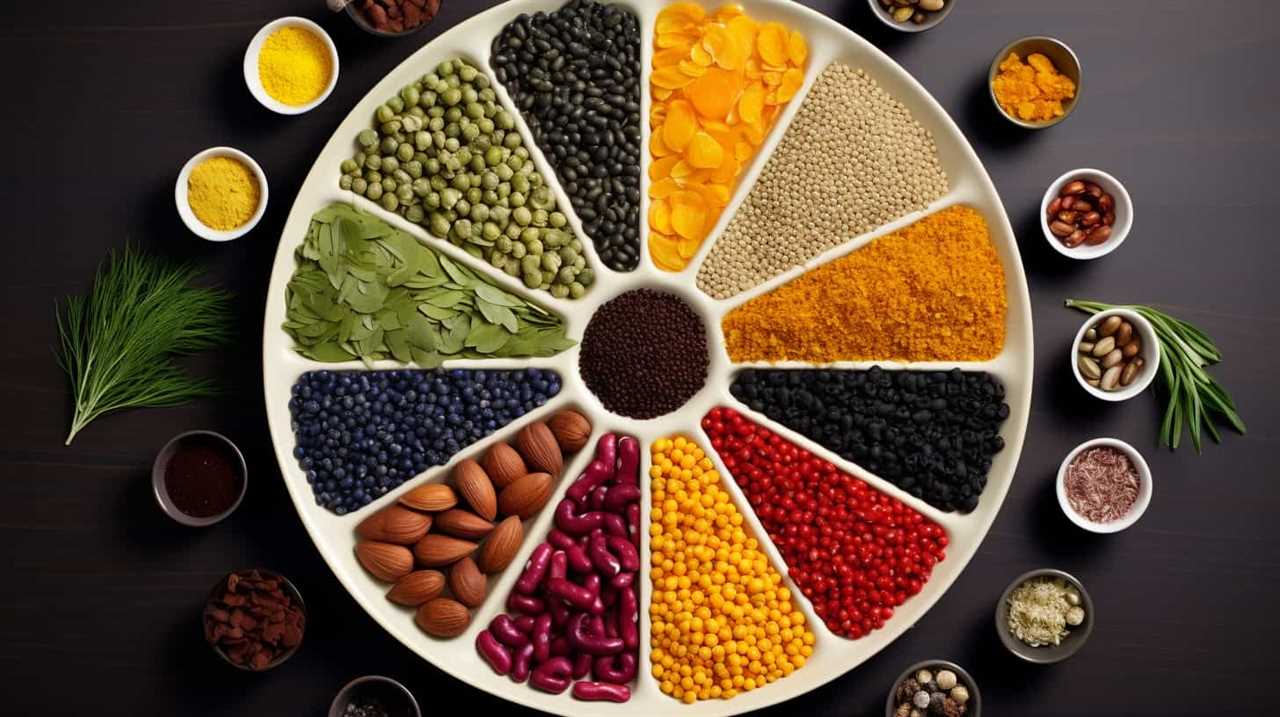
What Is the Recommended Method for Storing Chia Seeds to Ensure Their Freshness and Longevity?
To ensure freshness and longevity, store chia seeds in an airtight container in a cool, dry place. This preserves their nutritional benefits and extends their shelf life. Incorporating chia seeds in recipes adds a healthy boost to your meals.
Conclusion
In conclusion, successfully harvesting chia seeds requires careful timing, keen observation, and proper preparation. By waiting for the right moment when the seeds are fully ripe and easily detach from the plant, you can ensure a bountiful harvest.
Gently handpicking the seeds and allowing them to dry thoroughly will guarantee their longevity. So, venture into your garden, let the vibrant chia plants guide you, and enjoy the satisfaction of a well-harvested crop.
Hi, I’m Sarah. I write for Turtle Tree Seeds, a news blog that loves food – all kinds of food. But especially bacon, chocolate, and veggies. We’re on a mission to show the world that you can enjoy all of those things, even kale and brussels sprouts. Because we believe that when it comes to food, there’s no such thing as guilty pleasures. Just pleasures.
I’m also a huge fan of puns (obviously).
Growing and Harvesting Chia Seeds
Your Complete Guide to Growing Chia Seeds Indoors
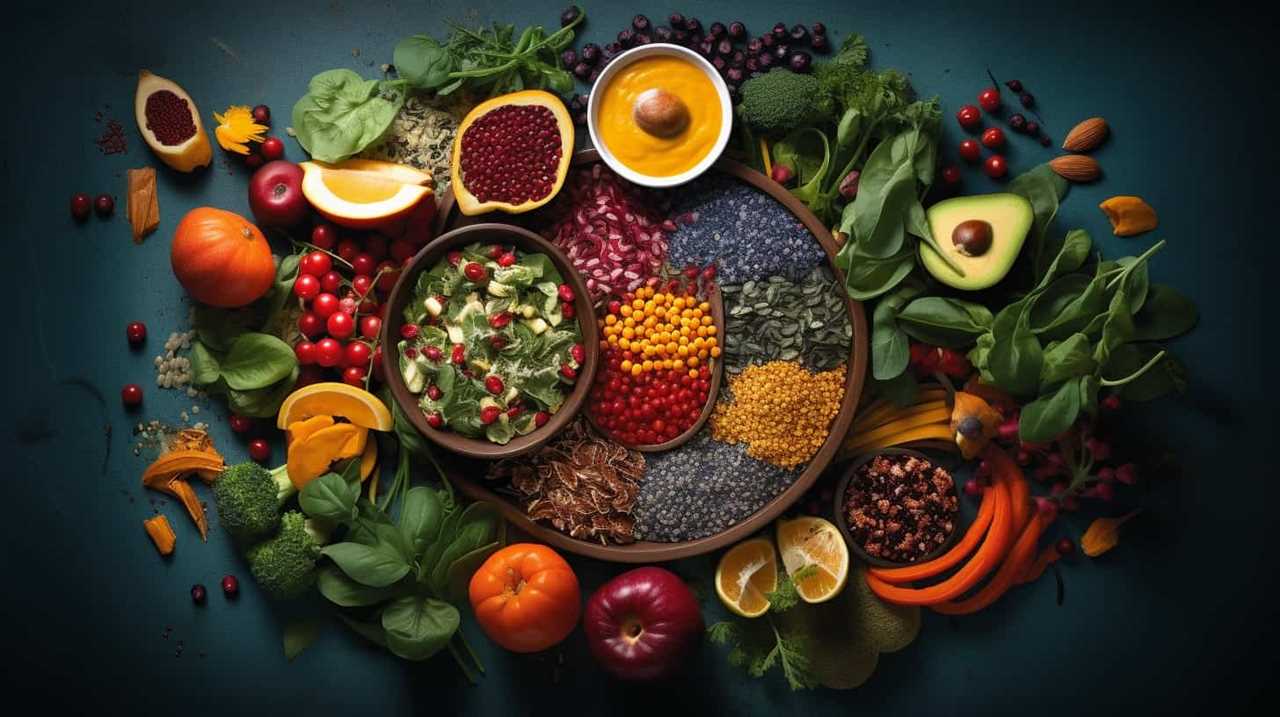
Welcome to our detailed guide on growing chia seeds indoors! We are thrilled to help you learn how to successfully cultivate these healthy superfoods in the comfort of your own home.
With our step-by-step instructions and expert tips, you’ll learn everything from choosing the right chia seeds and creating the perfect growing environment to nurturing your seedlings and harvesting the bountiful rewards.
Get ready to embark on a journey of self-sufficiency and health as we serve you the knowledge you need to grow chia seeds like a pro.
Key Takeaways
- Select high-quality chia seeds labeled as ‘sprouting’ or ‘germinating’
- Create an ideal growing environment with optimal light conditions and temperature range
- Regularly water and care for chia seedlings, addressing any issues promptly
- Harvest and store chia seeds properly, and incorporate them into a healthy diet for their numerous benefits
Choosing the Right Chia Seeds
We need to select the appropriate quantity of chia seeds for optimal indoor growth. When selecting high quality chia seeds, it’s important to understand the various varieties available.
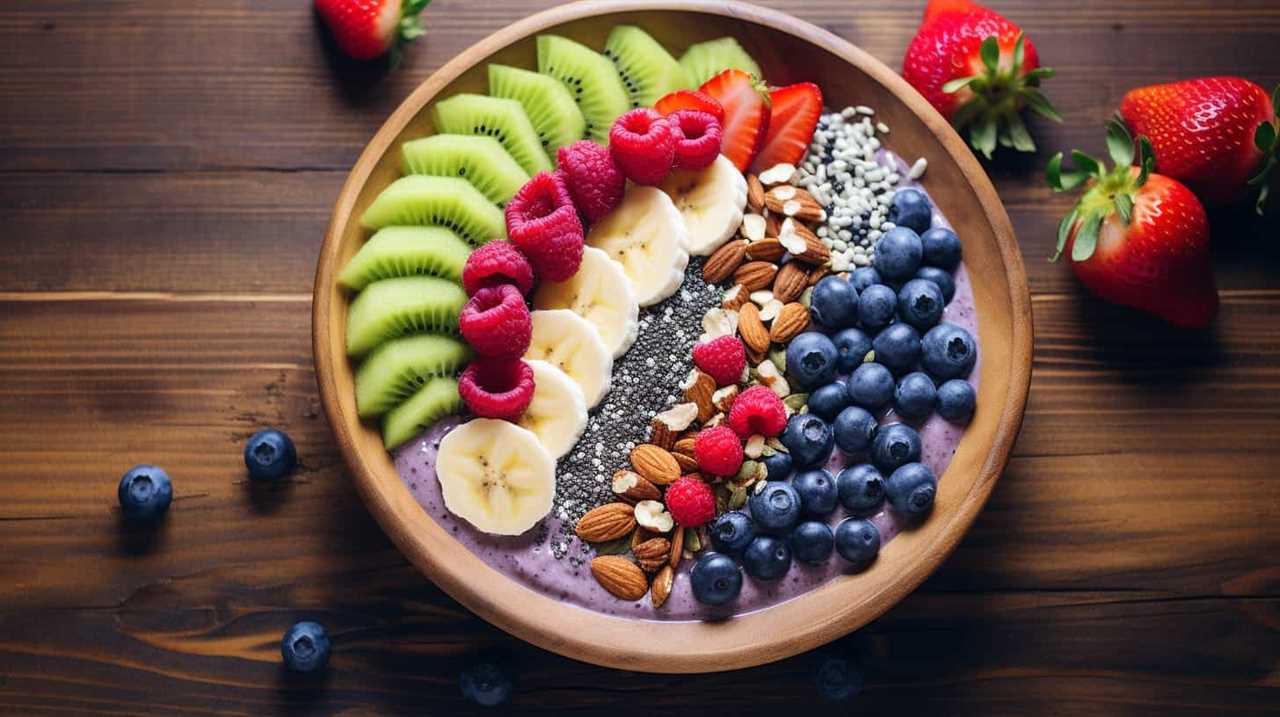
There are two main types of chia seeds: black and white. Black chia seeds are the most common variety and have a mild, nutty flavor. White chia seeds, on the other hand, are slightly milder in taste and have a more subtle flavor profile.
It’s recommended to choose organic chia seeds, as they’re grown without the use of harmful pesticides or synthetic fertilizers. Additionally, look for chia seeds that are labeled as ‘sprouting’ or ‘germinating,’ as these have a higher germination rate and are more likely to produce healthy plants.
Setting up the Ideal Growing Environment
To create the ideal growing environment for your chia seeds indoors, it’s important to consider factors such as temperature, lighting, and moisture levels.
Start by creating a DIY chia seed sprouting tray. You can easily make one by using a shallow container with drainage holes and filling it with a mixture of potting soil and compost.
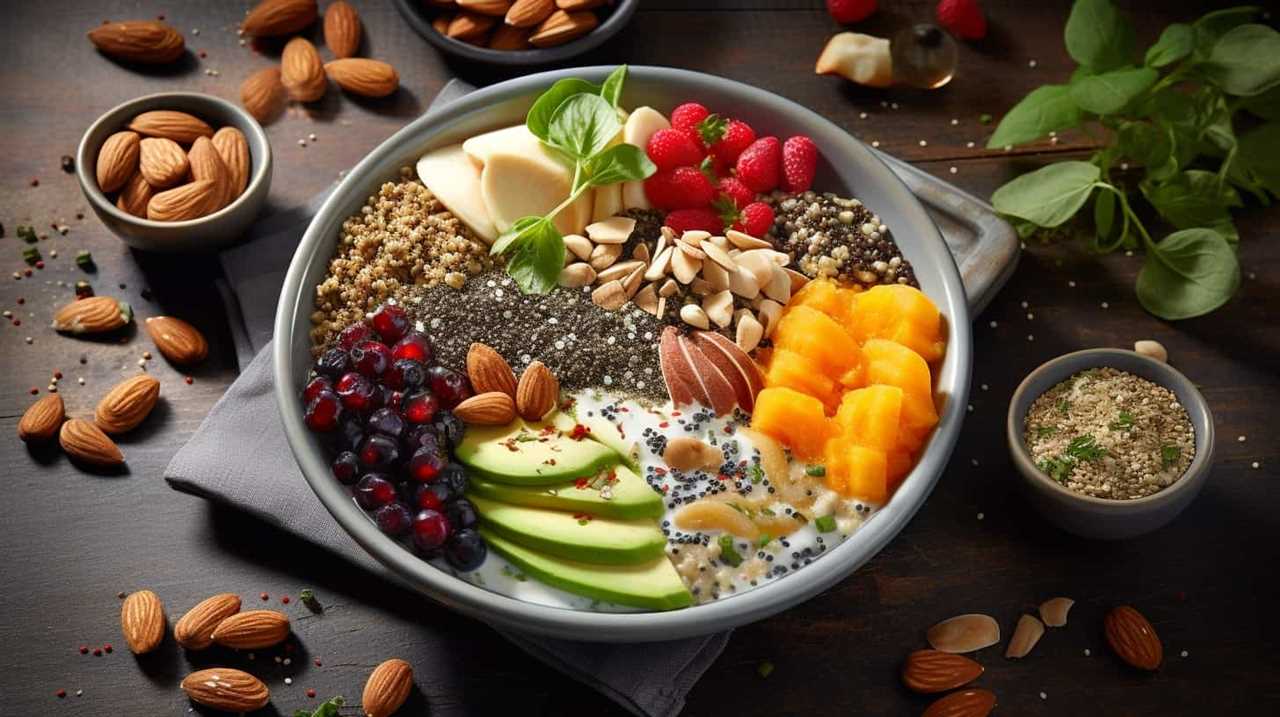
Optimize light conditions by placing the tray near a south-facing window or using artificial grow lights. Chia seeds require about 12-14 hours of light per day for optimal growth.
Maintain a temperature range of 65-75°F (18-24°C) during the day and slightly cooler at night.
Make sure to keep the soil consistently moist, but not waterlogged, by watering regularly or using a spray bottle.
With the right environment, your chia seeds will thrive and provide you with nutritious sprouts.
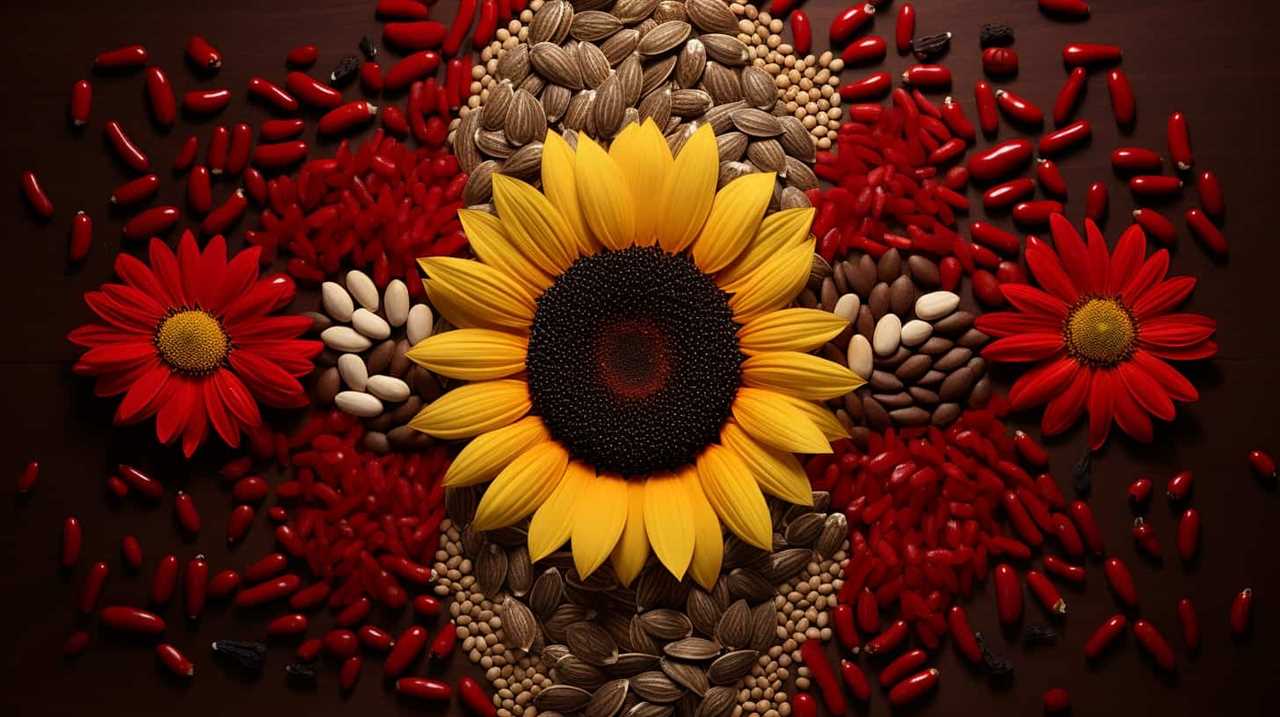
Planting and Germinating Chia Seeds
Once you have set up the ideal growing environment for your chia seeds indoors, it’s time to move on to planting and germinating the seeds. To germinate chia seeds indoors, start by soaking them in water for about 20 minutes. Then, spread the seeds evenly on a damp paper towel or a seedling tray filled with moist seed-starting mix. Cover the seeds with another layer of moist paper towel or seed-starting mix, ensuring they aren’t exposed to direct sunlight. Maintain a consistent temperature of around 70-75°F (21-24°C) and keep the seeds moist by misting them regularly. Germination usually takes about 7-10 days.
If you encounter any issues during germination, such as mold growth or slow germination, it’s important to troubleshoot the problem. Ensure proper air circulation, avoid overwatering, and provide adequate light without direct exposure to intense sunlight. Additionally, check the quality of your seeds and consider using fresh ones if necessary.
Transitioning into the subsequent section about nurturing and caring for chia seedlings, it’s important to continue providing the right conditions for their growth.
Nurturing and Caring for Chia Seedlings
After germination, it’s essential to provide optimal care and nourishment for your chia seedlings. A consistent watering schedule is crucial to ensure their healthy growth. Chia seedlings thrive in moist soil, so it’s important to keep the soil evenly moist but not waterlogged. Watering them once a day is typically sufficient, but adjustments may be needed based on the humidity levels in your environment.
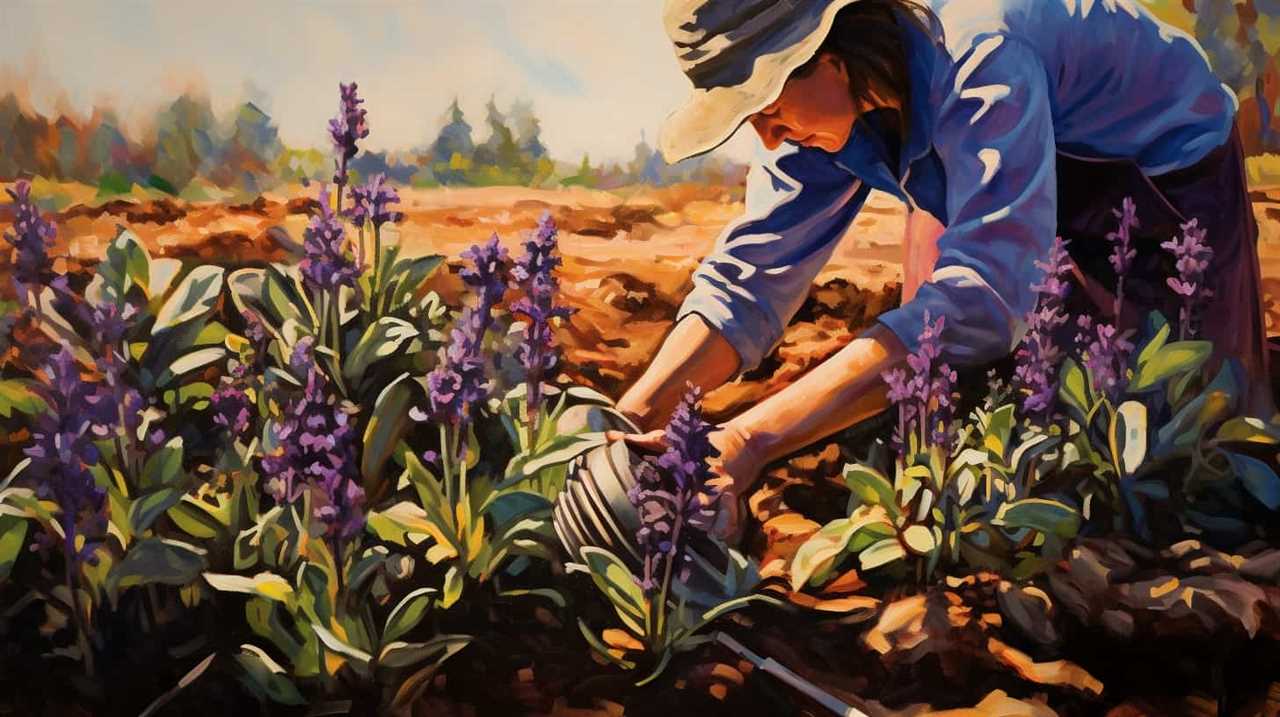
It’s important to monitor the moisture level of the soil regularly and adjust the watering schedule accordingly. Overwatering can lead to root rot, while underwatering can cause stunted growth or wilting. Additionally, it’s important to troubleshoot common issues such as nutrient deficiencies, pests, or diseases that may affect the health of your chia seedlings. Regular inspection and prompt action can help ensure their successful growth.
Harvesting and Storing Chia Seeds
Continuing the care and nourishment of our chia seedlings, we now turn our attention to the important task of harvesting and storing the chia seeds.
Harvesting chia seeds is a straightforward process that requires a few simple steps. Here’s how you can do it:
- Wait for the chia plant to fully mature. The seeds are ready for harvest when the flowers have dried and the seed heads have turned brown.
- Gently cut the seed heads from the plant using pruning shears. Place the seed heads in a paper bag to catch any loose seeds that may fall during the process.
Processing chia seeds involves drying and cleaning them before storage. Here’s what you need to do:
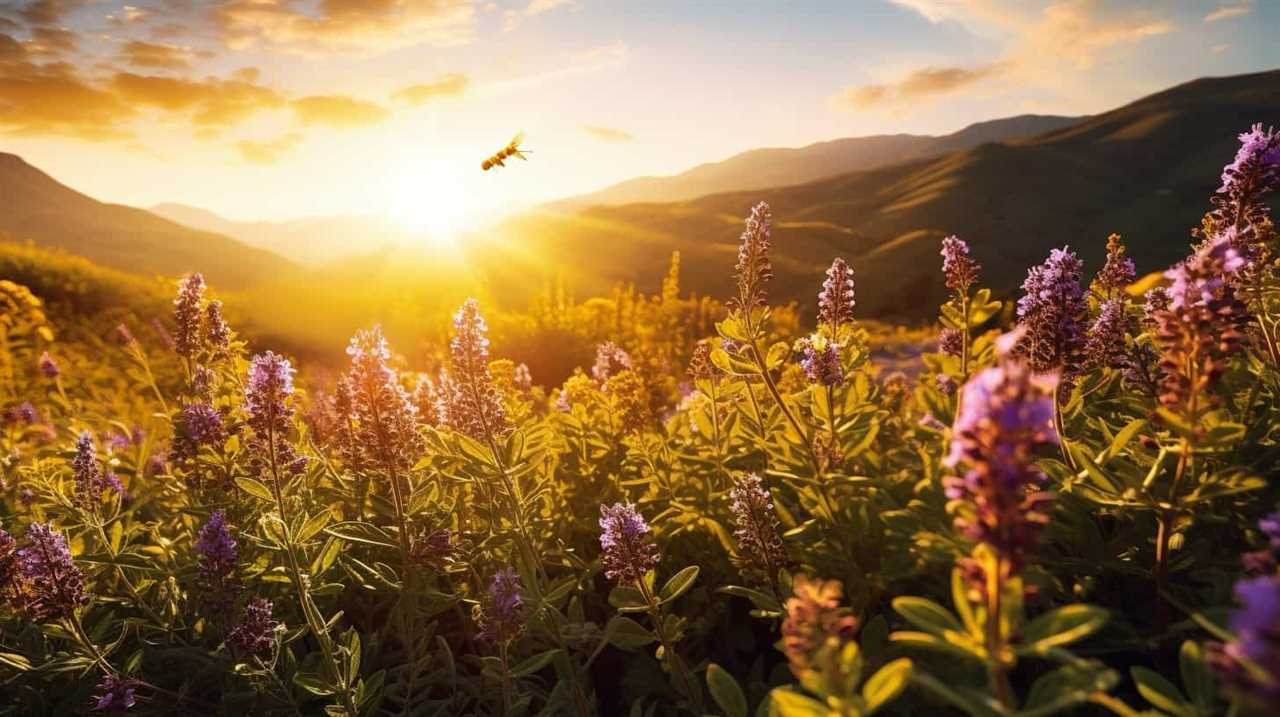
- Spread the harvested seed heads on a clean, dry surface and allow them to dry completely for a few days.
- Once the seeds are dry, gently rub the seed heads between your hands to separate the seeds from the chaff.
- Store the dried chia seeds in an airtight container in a cool, dark place to maintain their freshness.
Consuming chia seeds has numerous benefits, including their high fiber and omega-3 fatty acid content. They can be added to smoothies, yogurt, or baked goods for a nutritious boost.
Frequently Asked Questions
Can I Grow Chia Seeds Outdoors Instead of Indoors?
Growing chia seeds outdoors instead of indoors has its own benefits and drawbacks. While outdoor gardening allows for natural sunlight and more space, it also exposes the seeds to unpredictable weather conditions and pests.
How Long Does It Take for Chia Seeds to Germinate?
Chia seeds typically take 7-10 days to germinate. To speed up germination, soak the seeds in water for a few hours before planting. Ensure a warm temperature and moist soil for optimal growth.
Can I Use Regular Potting Soil to Grow Chia Seeds?
Yes, regular potting soil can be used for growing chia seeds. However, using specialized soil mixtures specifically designed for chia seeds can provide better results. These mixtures offer optimal drainage and nutrient content for successful chia seed growth.
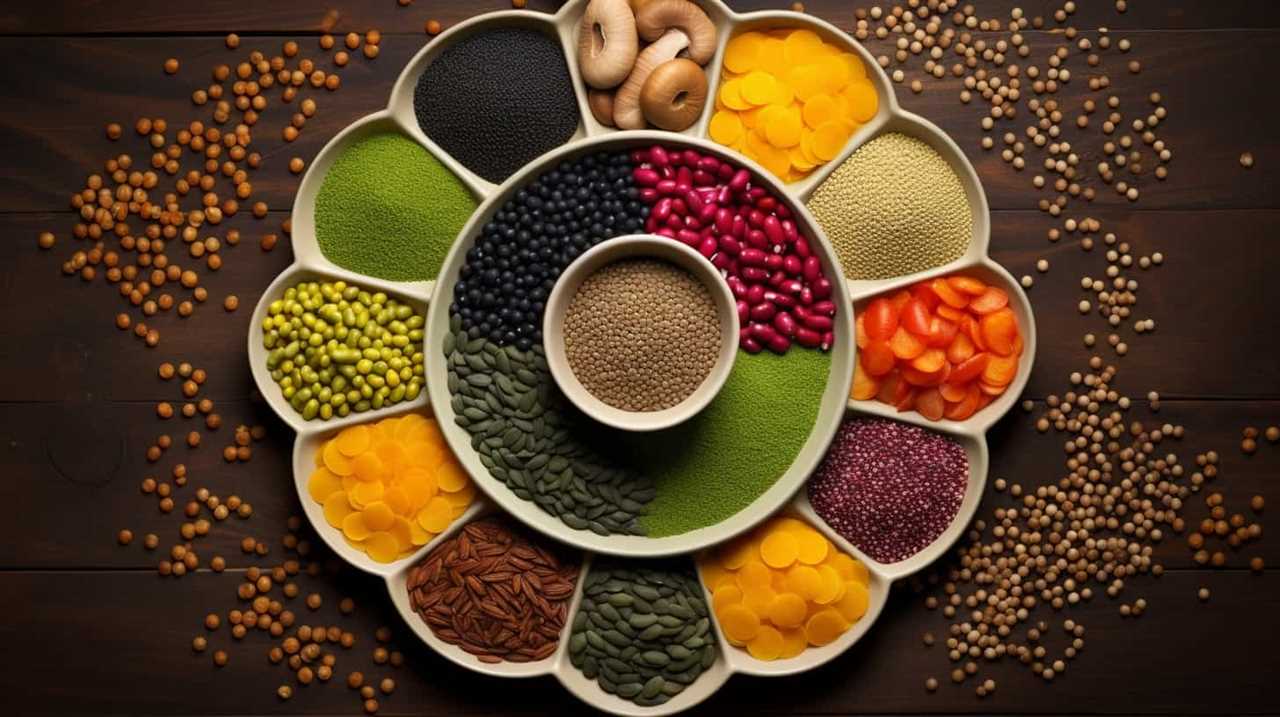
Do I Need to Use Fertilizer When Growing Chia Seeds Indoors?
Yes, fertilizer is necessary for growing chia seeds indoors. While there are alternative growing methods, using fertilizer ensures optimal growth and nutrient uptake. It promotes healthier plants and higher yields, leading to a more successful chia seed cultivation experience.
What Are Some Common Pests or Diseases That Affect Chia Seedlings?
Common pests affecting chia seedlings include aphids, spider mites, and fungus gnats. Diseases that can affect chia seedlings include damping-off, root rot, and powdery mildew. Proper care, such as regular monitoring and maintaining optimal growing conditions, can help prevent and manage these issues.
Conclusion
In conclusion, growing chia seeds indoors can be a rewarding and fulfilling experience.
By choosing the right chia seeds, creating the ideal growing environment, and providing proper care, you can successfully cultivate chia seedlings.
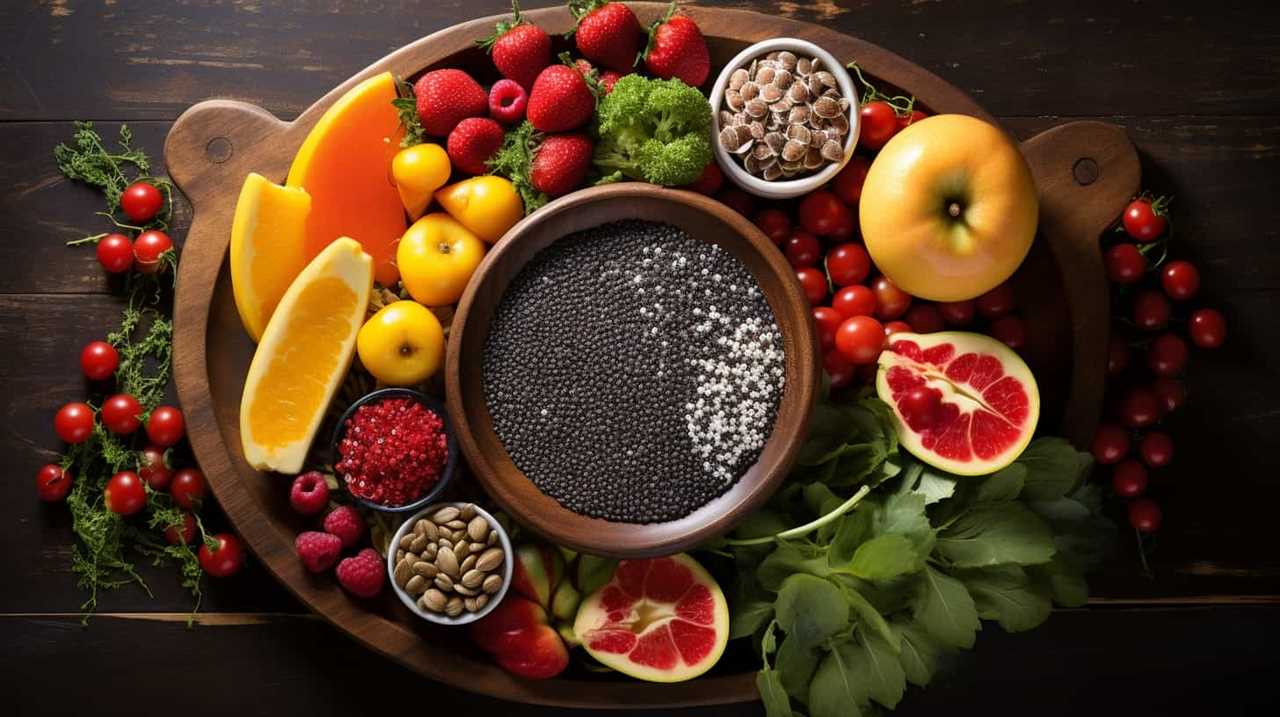
Remember to harvest the seeds at the right time and store them properly to ensure their freshness and longevity.
With a little patience and dedication, you can enjoy the nutritional benefits of chia seeds right from the comfort of your own home.
Hi, I’m Sarah. I write for Turtle Tree Seeds, a news blog that loves food – all kinds of food. But especially bacon, chocolate, and veggies. We’re on a mission to show the world that you can enjoy all of those things, even kale and brussels sprouts. Because we believe that when it comes to food, there’s no such thing as guilty pleasures. Just pleasures.
I’m also a huge fan of puns (obviously).
Growing and Harvesting Chia Seeds
Why Should We Harvest Seeds for Consuming?
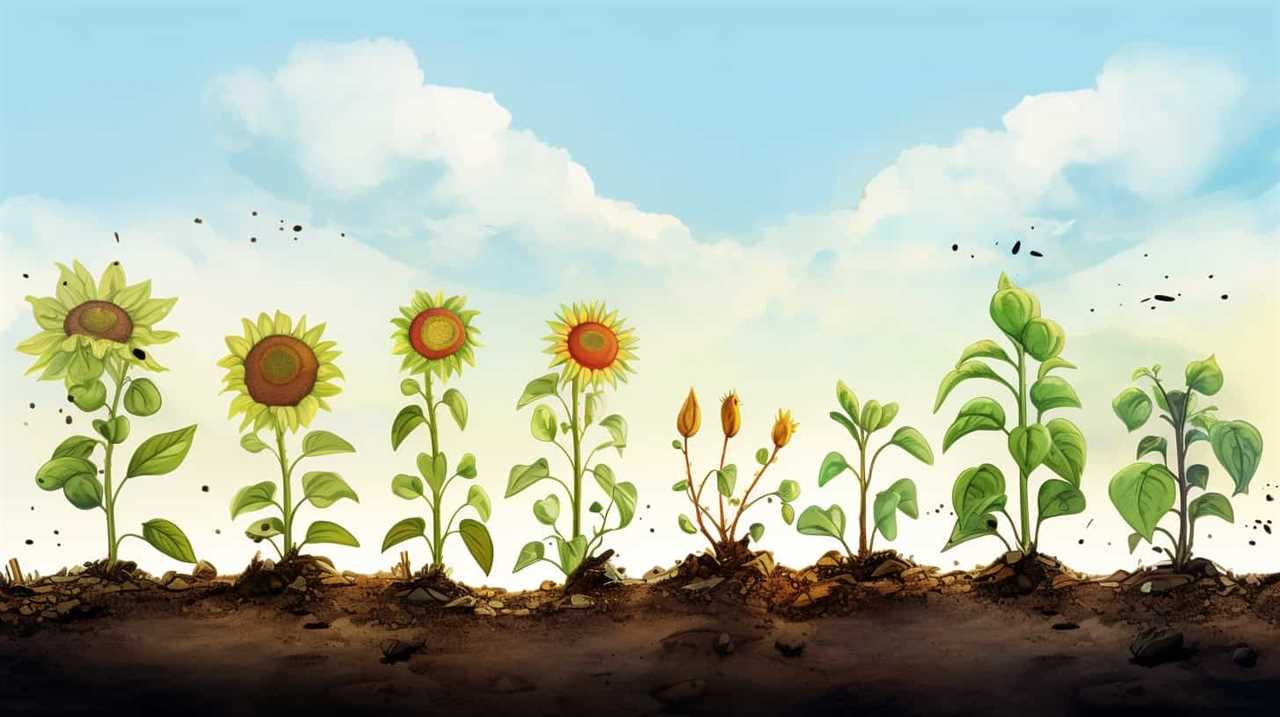
Have you ever wondered **why collecting seeds is important**? Find out the surprising benefits and secrets about the value of gathering seeds in your daily life. Learn about the advantages of consuming seeds and how they can boost your health. Keep reading to discover how simple seeds can make a big difference in your well-being.
We often overlook the nutritional benefits of freshly harvested seeds. At our fingertips, we have a wealth of nutrients waiting to be unlocked.
In this article, we will explore the health benefits and nutritional value of harvesting chia seeds. We will also provide tips for growing and harvesting these seeds sustainably.
Join us as we discover delicious recipes that utilize the goodness of freshly harvested chia seeds. Let’s nourish ourselves and serve others through the power of seeds.
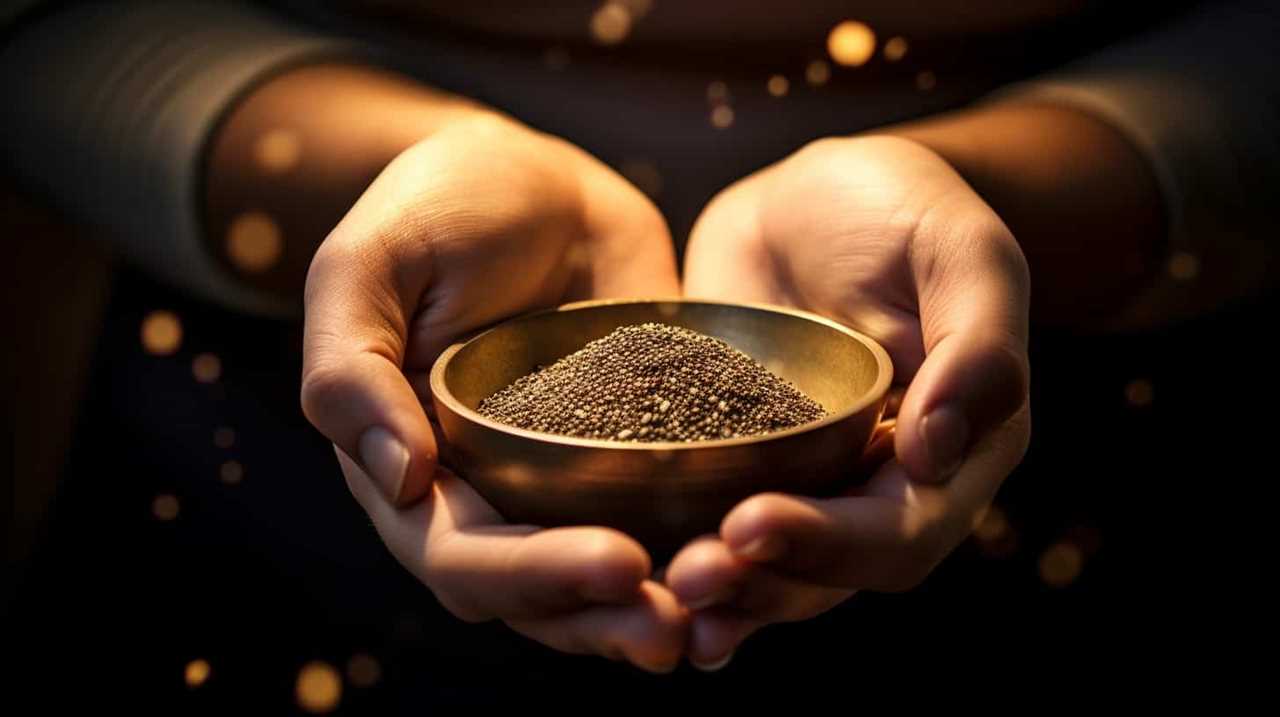
Key Takeaways
- Harvesting seeds for consuming allows us to access the health benefits and nutritional value they provide.
- Seeds, such as chia seeds, are considered superfoods due to their impressive nutrient profile.
- Chia seeds are rich in omega-3 fatty acids, antioxidants, fiber, protein, and various vitamins and minerals.
- Regular consumption of chia seeds may promote overall well-being, including a healthy gut, brain health, reduced inflammation, and weight management.
Health Benefits of Harvesting Chia Seeds
The health benefits of harvesting chia seeds are numerous and can greatly contribute to our overall well-being. When it comes to potential side effects, chia seeds are generally safe for consumption. However, some individuals may experience digestive issues such as bloating or gas due to the high fiber content of chia seeds. It’s important to start with small portions and gradually increase intake to avoid discomfort.
In terms of nutritional benefits, chia seeds are considered a superfood due to their impressive nutrient profile. They’re rich in omega-3 fatty acids, antioxidants, fiber, protein, and various vitamins and minerals. Comparing chia seeds to other superfoods, they stand out for their high omega-3 content, which is essential for brain health and reducing inflammation. Chia seeds also provide a good amount of calcium, iron, and magnesium, which are important for bone health, energy production, and muscle function.
Understanding the potential side effects and the nutritional benefits of chia seeds sets the stage for exploring the exceptional nutritional value of freshly harvested chia seeds.
Nutritional Value of Freshly Harvested Chia Seeds
When harvesting seeds for consumption, we can benefit from the exceptional nutritional value of freshly harvested chia seeds. Chia seeds are packed with essential nutrients that can contribute to a balanced and healthy diet.
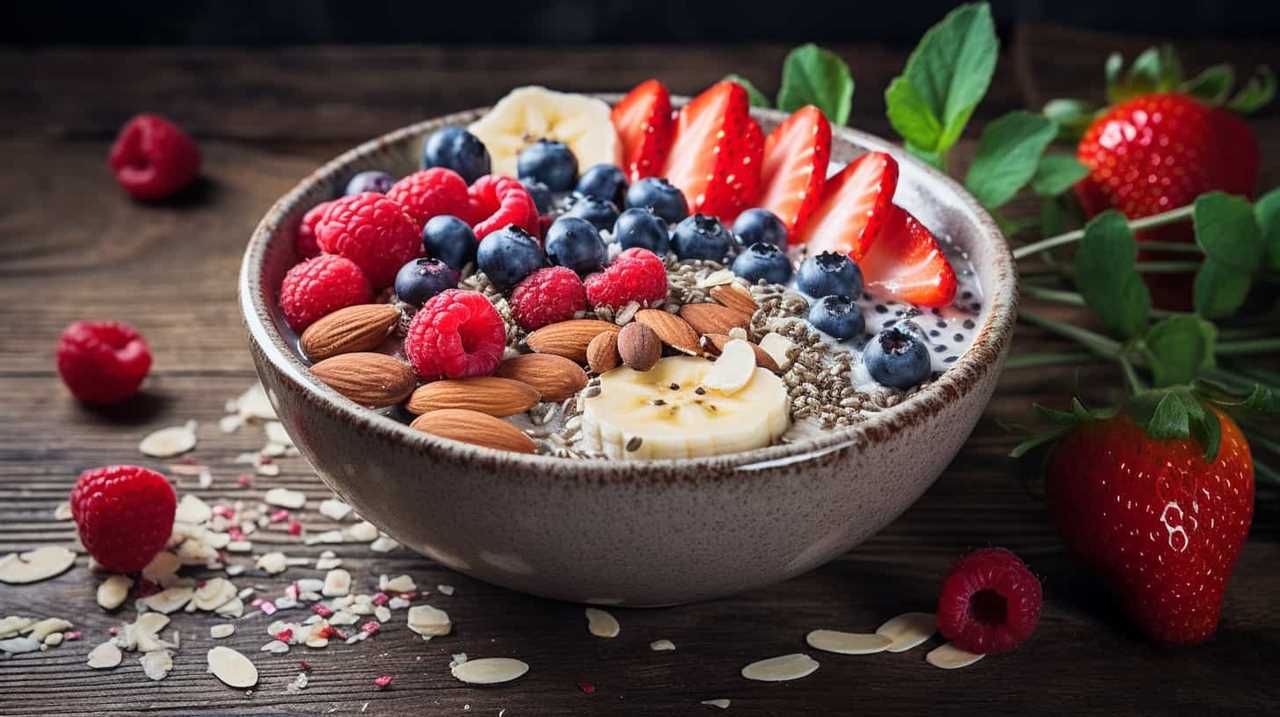
These tiny seeds are an excellent source of omega-3 fatty acids, fiber, protein, and antioxidants. Omega-3 fatty acids are known to support heart health and reduce inflammation. Fiber aids in digestion and helps regulate blood sugar levels. Protein is essential for muscle growth and repair. Antioxidants protect the body against free radicals and oxidative stress.
To preserve the nutritional benefits of chia seeds, it’s important to store them properly. Keep them in an airtight container in a cool, dry place away from direct sunlight. This will ensure the longevity of their nutritional value.
Tips for Growing and Harvesting Chia Seeds
To successfully grow and harvest chia seeds, we recommend using a well-draining soil mixture.
Here are three essential tips for growing and harvesting chia seeds:
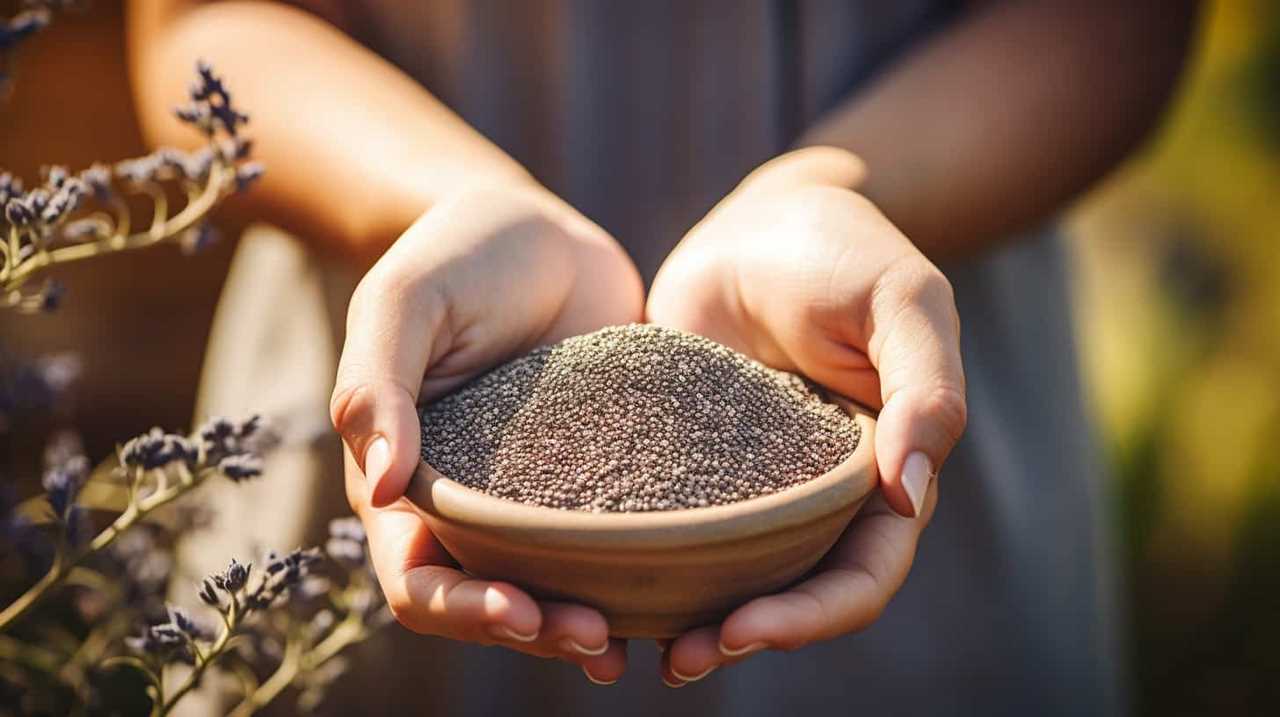
-
Sowing and Germination: Chia seeds should be sown in late spring or early summer, when the soil temperature reaches around 70°F (21°C). Prepare the soil by loosening it and removing any weeds. Sow the seeds evenly and cover them with a thin layer of soil. Water the area lightly, ensuring the soil remains consistently moist until germination occurs, which usually takes about two weeks.
-
Watering and Maintenance: Chia plants require regular watering but be cautious not to overwater, as excessive moisture can cause the seeds to rot. Water the plants when the top inch of soil feels dry. Additionally, removing weeds and providing support for the tall-growing chia plants is important for their optimal growth.
-
Harvesting and Storage: Chia seeds are ready for harvest when the plants have dried out and turned brown. Cut the plants at the base and hang them upside down in a well-ventilated area to allow the seeds to fully dry. Once dry, gently rub the seed heads to release the seeds. Store the harvested seeds in an airtight container in a cool, dry place to maintain their freshness and nutritional value.
Sustainable Farming Practices for Chia Seed Harvesting
Now let’s delve into sustainable farming practices for chia seed harvesting, focusing on our commitment to environmentally friendly cultivation methods.
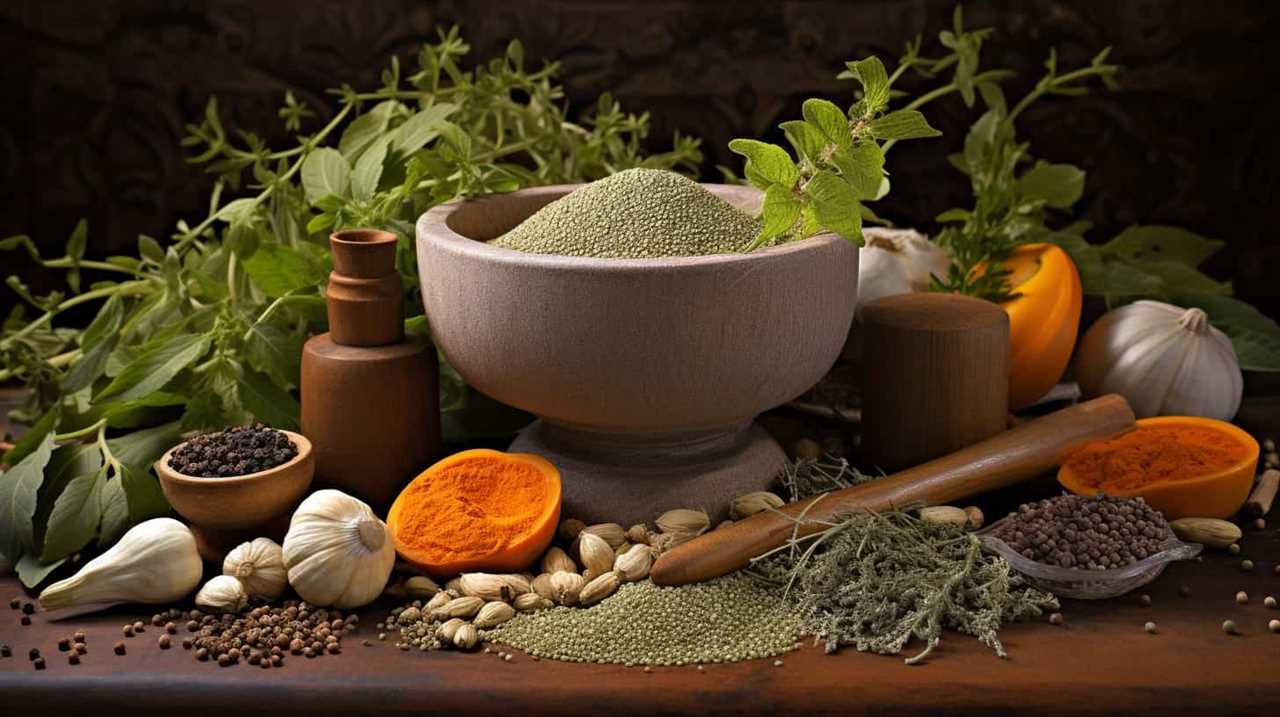
Sustainable agriculture is at the core of our approach, as we strive to minimize our environmental impact while producing high-quality chia seeds. One key practice we implement is crop rotation, which helps to maintain soil health and prevent the buildup of pests and diseases.
We also prioritize water conservation by utilizing efficient irrigation systems and monitoring soil moisture levels. Additionally, we employ natural pest control methods, such as beneficial insects and companion planting, to reduce the need for harmful pesticides.
By implementing these sustainable farming practices, we can ensure the long-term viability of chia seed production while minimizing our impact on the environment.
Now, let’s move on to the next section to explore delicious recipes using freshly harvested chia seeds.
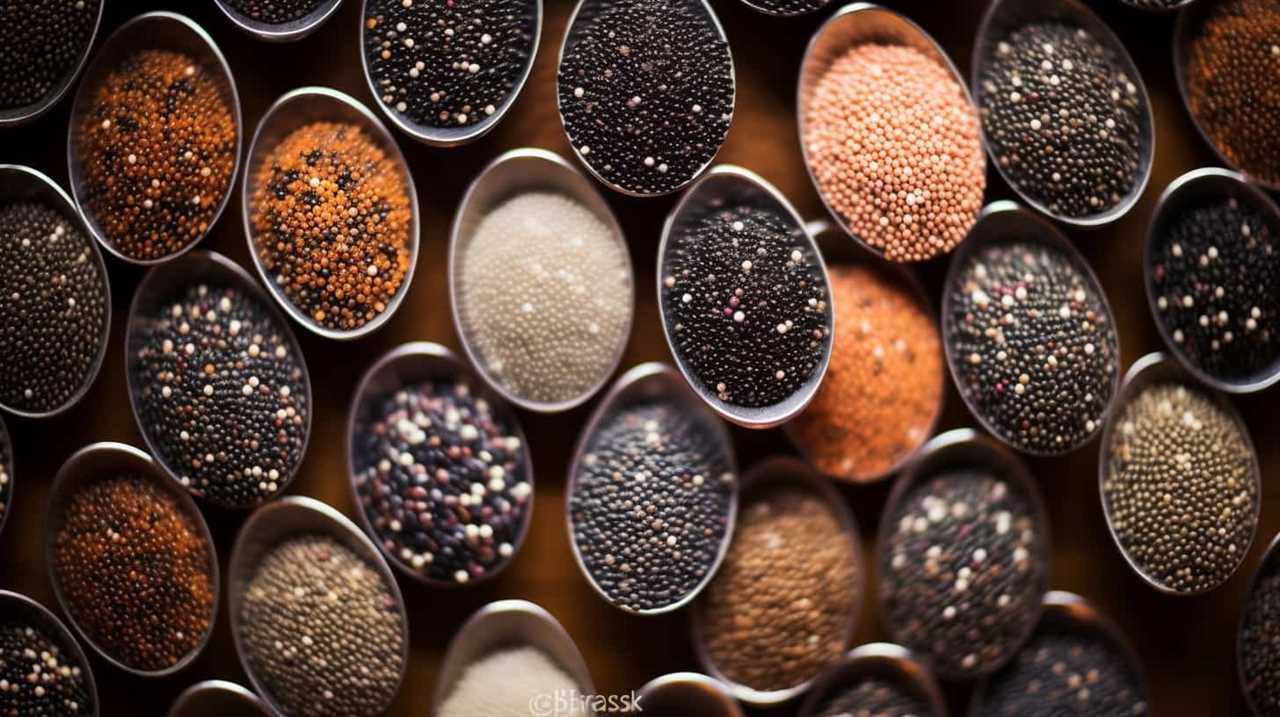
Delicious Recipes Using Freshly Harvested Chia Seeds
Let’s explore some mouthwatering recipes that feature our freshly harvested chia seeds. Chia seeds aren’t only nutritious but also incredibly versatile in the kitchen. Here are three delightful ways to incorporate them into your meals:
-
Chia Seed Smoothie Recipes: Start your day with a refreshing and nutrient-packed smoothie. Blend together a ripe banana, a handful of berries, a tablespoon of chia seeds, and your favorite plant-based milk. This smoothie will provide you with a boost of energy and keep you feeling satisfied throughout the morning.
-
Chia Seed Pudding Variations: For a delicious and healthy dessert, try making chia seed pudding. Combine chia seeds with your choice of milk, a touch of sweetener, and any desired flavorings such as vanilla extract or cocoa powder. Let it sit in the fridge overnight, and wake up to a creamy and indulgent treat.
-
Chia Seed Energy Balls: These bite-sized snacks are perfect for on-the-go or as a post-workout refuel. Mix together chia seeds, nut butter, honey, and your favorite nuts or dried fruits. Form into small balls and refrigerate until firm. Enjoy these nutritious treats whenever you need a quick pick-me-up.
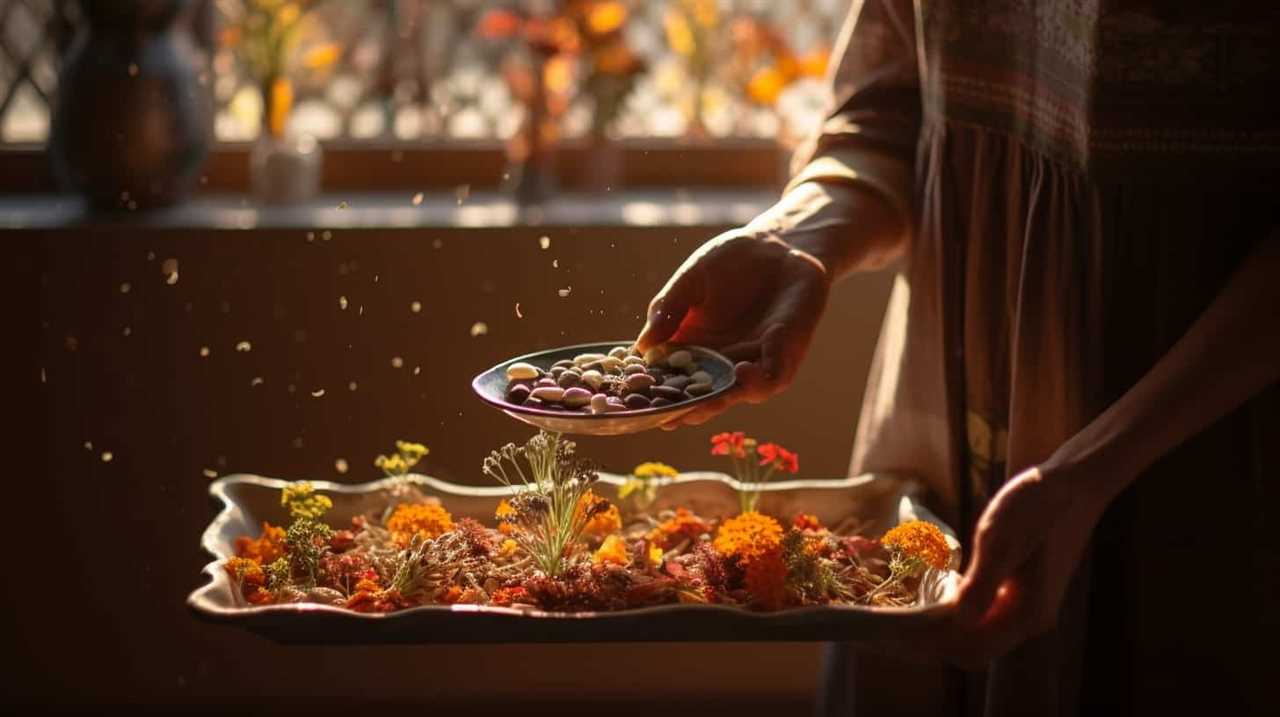
With these recipes, you can enjoy the health benefits of chia seeds while satisfying your taste buds. So go ahead and start experimenting in the kitchen with these delightful chia seed creations.
Frequently Asked Questions
How Long Do Chia Seeds Stay Fresh After Harvesting?
Chia seeds can stay fresh for a long time after harvesting, making them ideal for long term storage. They offer numerous nutritional benefits, including high fiber, omega-3 fatty acids, and antioxidants.
Are There Any Potential Side Effects or Allergic Reactions From Consuming Freshly Harvested Chia Seeds?
Potential side effects or allergic reactions from consuming freshly harvested chia seeds are rare, but precautions should be taken. Comparing nutritional benefits, fresh seeds retain more nutrients and antioxidants than store-bought ones.
Can I Harvest Chia Seeds From Plants Grown Indoors?
Yes, we can harvest chia seeds from indoor plants. By providing proper care to indoor chia plants, we can ensure a good yield of seeds. Eating chia seeds offers numerous benefits, including improved digestion and heart health.
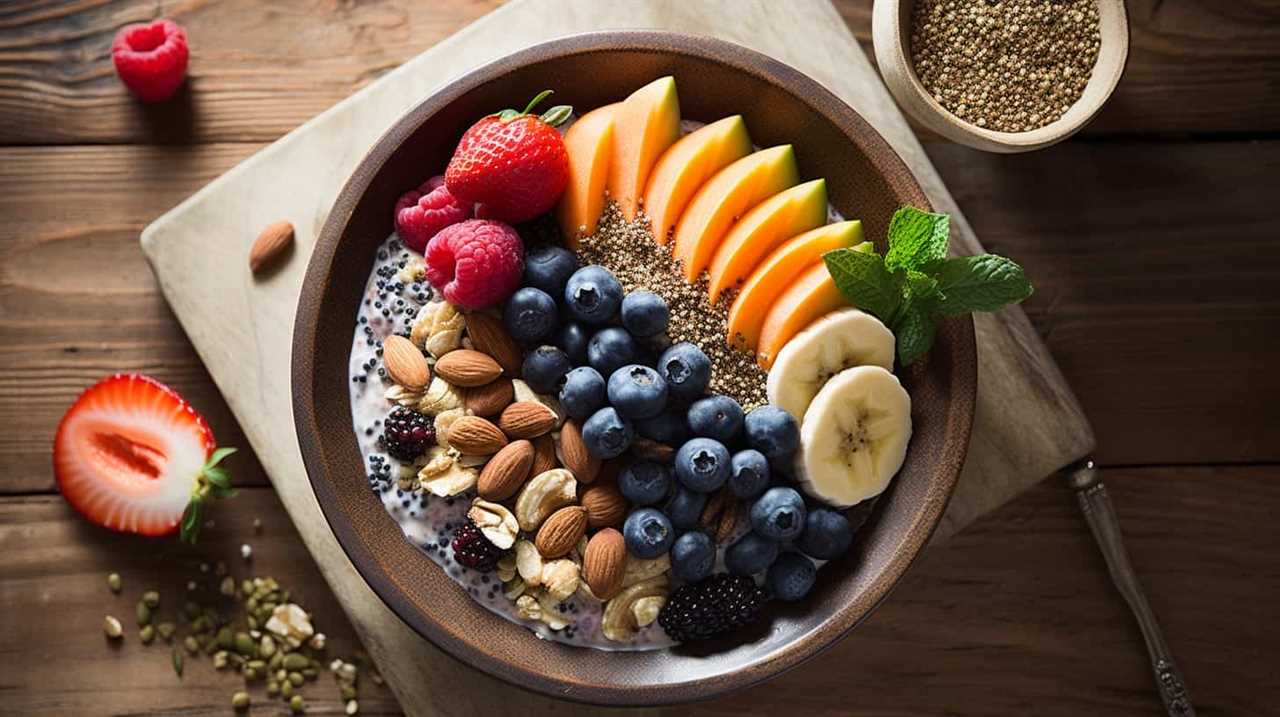
Are There Any Specific Tools or Equipment Needed for Harvesting Chia Seeds?
When harvesting chia seeds indoors, there are a few tools and equipment that can help. Tips for successful chia seed harvesting include using a fine-mesh sieve, a clean and dry container, and gently shaking the plants to release the seeds.
Can I Store Harvested Chia Seeds for a Long Period of Time?
Yes, we can store harvested chia seeds for a long time. However, consuming fresh chia seeds has numerous benefits. Storing them properly ensures their nutritional value and extends their shelf life.
Conclusion
In conclusion, the act of harvesting seeds for consumption is akin to reaping the fruits of our labor in the field of health. Just as a diligent farmer tends to their crops to ensure a bountiful harvest, we too can cultivate a healthier lifestyle by incorporating freshly harvested chia seeds into our diets.
With their abundant nutritional value and numerous health benefits, these tiny powerhouses can nourish our bodies and contribute to our overall well-being. So let’s embrace the art of seed harvesting and savor the rewards it brings.
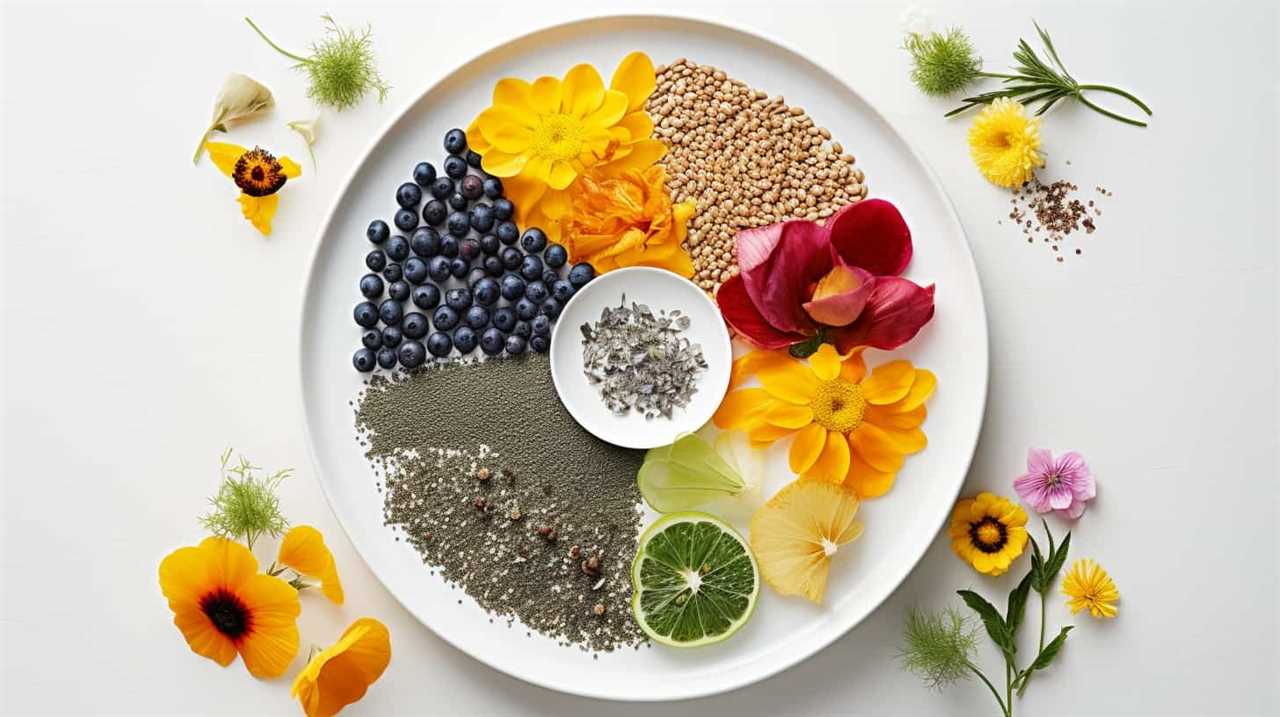
Hi, I’m Sarah. I write for Turtle Tree Seeds, a news blog that loves food – all kinds of food. But especially bacon, chocolate, and veggies. We’re on a mission to show the world that you can enjoy all of those things, even kale and brussels sprouts. Because we believe that when it comes to food, there’s no such thing as guilty pleasures. Just pleasures.
I’m also a huge fan of puns (obviously).
-
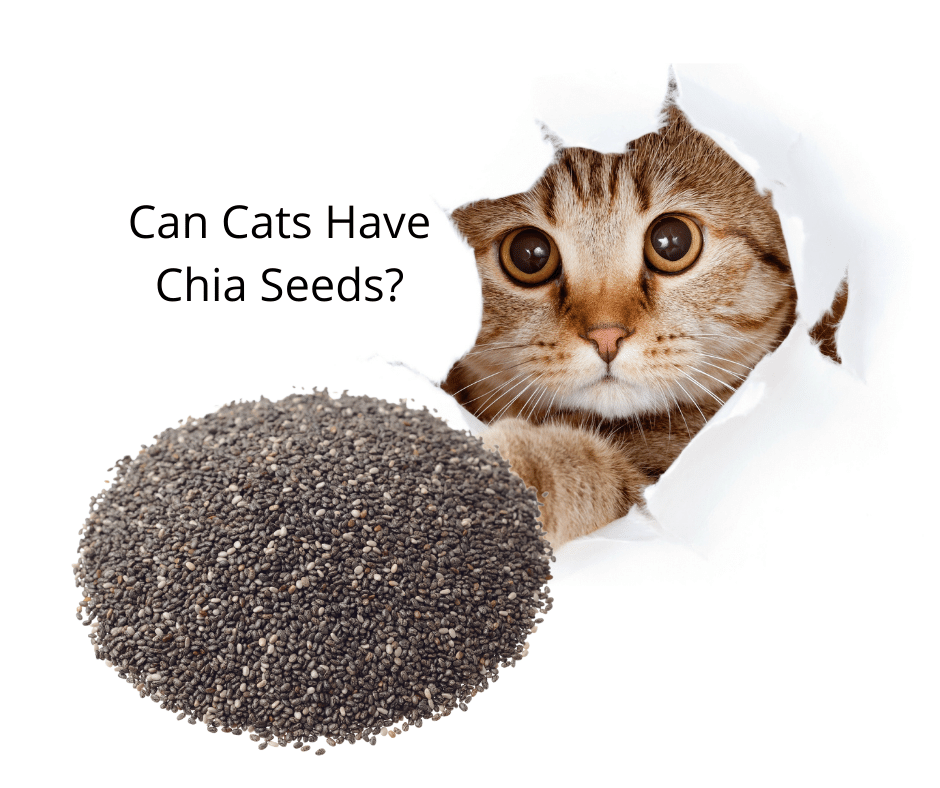
 Chia Seeds3 months ago
Chia Seeds3 months agoCan Cats Have Chia Seeds?
-
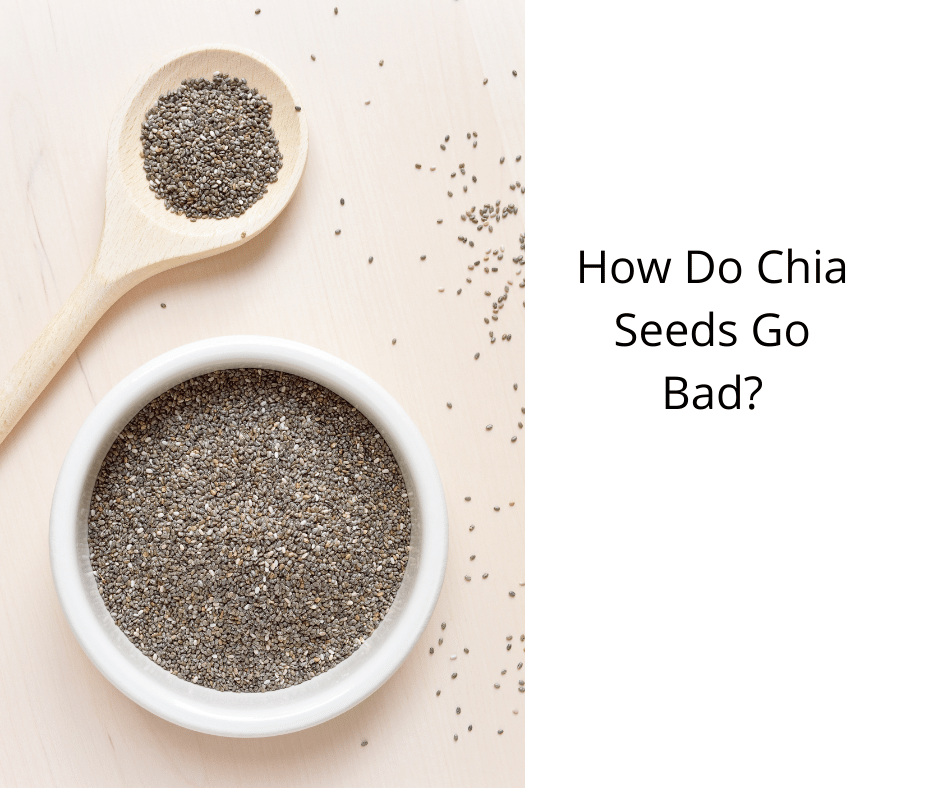
 Chia Seeds3 months ago
Chia Seeds3 months agoHow Do Chia Seeds Go Bad?
-

 Chia Seeds3 months ago
Chia Seeds3 months agoDo Chia Seeds Make You Poop?
-

 Health Risks and Allergies Related to Chia Seeds3 months ago
Health Risks and Allergies Related to Chia Seeds3 months agoWhy Do Chia Seeds Gel
-

 Chia Seeds3 months ago
Chia Seeds3 months agoHow to Use Chia Seeds For Weight Loss
-

 Chia Seeds and Digestive Health2 weeks ago
Chia Seeds and Digestive Health2 weeks agoWhy Are Chia Seeds Beneficial For Gut Health?
-
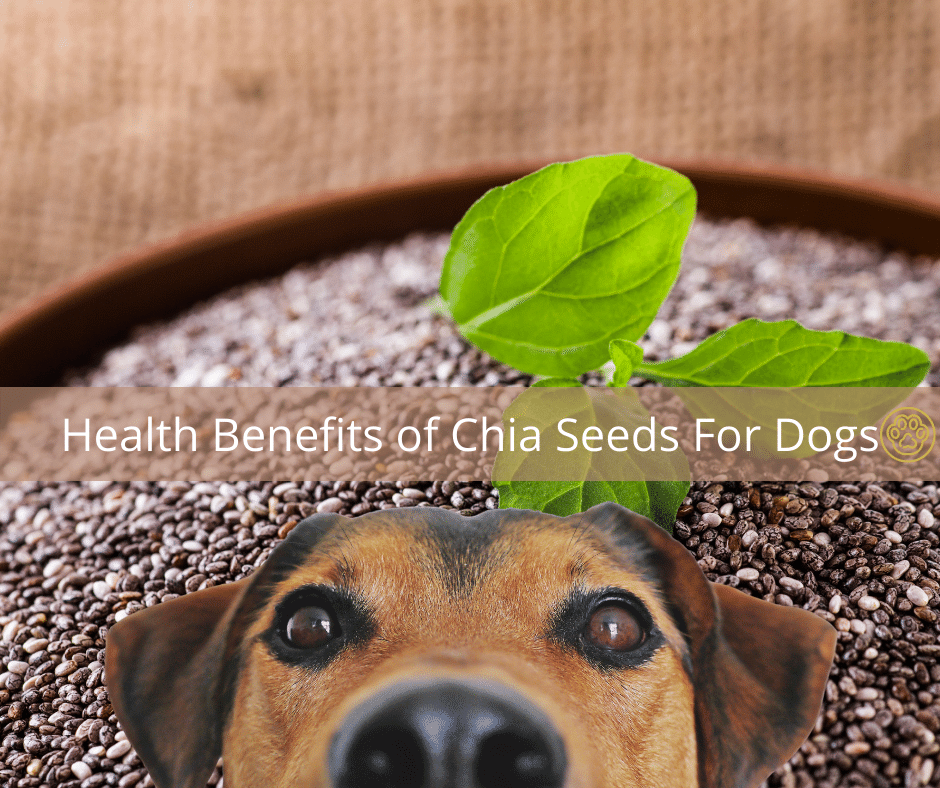
 Chia Seeds3 months ago
Chia Seeds3 months agoHealth Benefits of Chia Seeds For Dogs
-
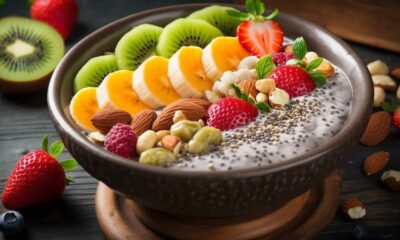
 Chia Seeds in Gluten-Free Diets2 months ago
Chia Seeds in Gluten-Free Diets2 months agoYour Dependable Guide: Chia as a Gluten Substitute




